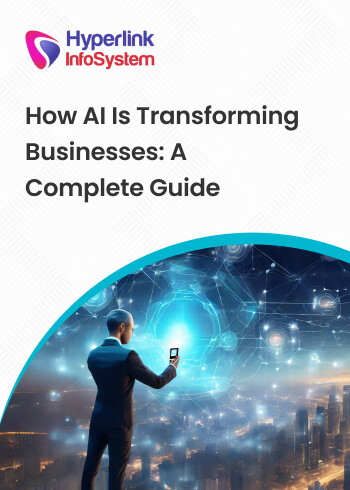The Dot.com revolution heralded a new age for humanity and we haven’t looked back since. Thanks to the internet, the entire world is connected with each other. Web technologies have made a definitive change in our lives and to this day, they are changing the world.
Everything is now shifting online. From businesses and government institutions to our personal and social interactions, we are moving everything to the web. Since the year 2000, the total number of websites has exploded. In just 21 years, the websites on the web increased
from 17 million to over 1.88 billion in 2021, increasing over 100 times.
As of January 2020, websites
crossed 17.4 billion with an increasing number of businesses investing in websites. Apart from that, the rise of a web as a platform has inspired businesses to shift online completely. From e-commerce, banking, real state, and software, to service industries, education, and healthcare, everything now resides on the web.
Unsurprisingly, this has created a massive demand for web developers. According to the
U.S. Bureau of Labor Statistics, web development provided employment to 197,100 developers in the US alone. Going forward, the industry is expected to grow 23% from 2021 to 2031, faster than most other occupations.
Web development is notorious for pioneering new technologies and innovation. It has a large and active community of companies, developers, and experts, who actively seek new development platforms, programming languages, and tools to improve their solutions.
Meaning that you will always have new tools and technologies to learn and master. As
web technologies become increasingly powerful, you’ll have more outstanding options to expand your skill set and create solutions that solve real-world problems.
Moreover, it’s one of the most high-paying careers today. The Median Pay for web developers in the US is $78,300 annually, translating to $37.65/hour. Notably, web development allows aspiring professionals to break into the industry without any prior work experience. Needless to say, this is the perfect time to choose web development as a career path.
To study the current state of web development today, we have created a detailed report on the demand to
hire web developers in 2022. In this report, we will explore the state of web development, the reasons for its growth, and, most importantly, the demand for web developers across different industries, technologies, and use cases.
What Is the Web and How Does It Work?
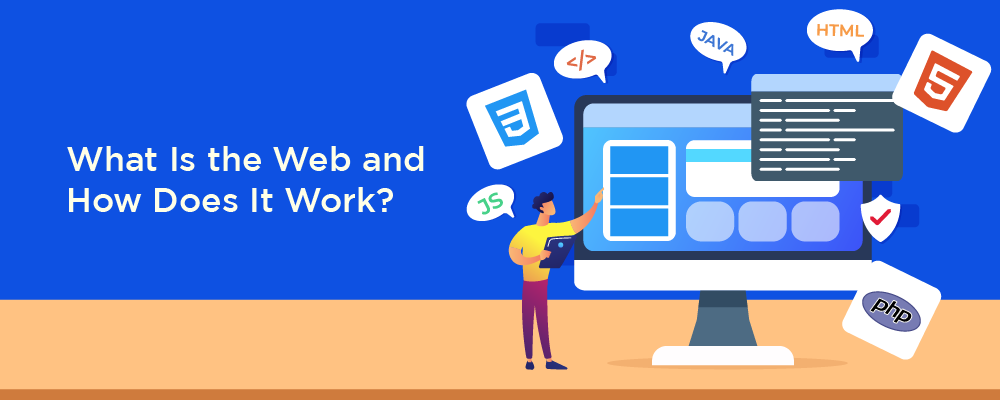
The web is a system for publishing pages of information on the internet and for linking pages together using links.
Anyone can publish a page by uploading it to a web server. Anyone can read that page by typing its address into a web browser. This makes it very easy for people to share documents even if they are using what would otherwise be incompatible computers. In fact, that’s exactly why Tim Berners-Lee invented the World Wide Web in the early 1990s.
The web would be useful but annoying if you had to type the precise address - the URL (uniform resource locator) - for every page you wanted. Fortunately, you don’t have to. Web pages can include embedded links or ’hyperlinks’, so simply clicking the link will take you to that page. Following a trail of links is called ‘web surfing’.
What Are Links?
The web is based on the idea of ’hypertext’. This implies that texts can be embedded inside other texts, perhaps to provide fuller explanations or background material. Web pages can also embed multimedia so that, for example, clicking the word ‘cello’ could play some cello music.
How do you know where to click? Traditionally, links were shown by using underlined blue text, and they changed color after they’d been clicked. However, icons, images, videos, and other items can also be used as links. Today, many people understand the conventions for what sort of things are links, so many web developers let users find them with their mouse pointer. There's a clickable link when the pointer turns into a small hand.
The web is also traversed by ’spiders’ (or software robots) that follow links and collect information that can be used by search engines such as Google. Not all web users are human!
Web Pages
A web page is a specific collection of information a website provides and displays to a user in a web browser. A website typically consists of many web pages linked together in a coherent fashion. The name "web page" is a metaphor for paper pages bound together into a book.
Web pages are written in text with Hypertext Markup Language (HTML), then uploaded to a host computer running web server software, such as Apache or Microsoft’s IIS (Internet Information Server).
Today, many web pages are not written in advance but created dynamically in response to someone’s input. This happens with answers to search engine queries and, for example, on shopping sites where people search for products within specific price ranges.
As websites are becoming more sophisticated than static pages, web developers are using many more versatile tools. These include CSS (Cascading Style Sheets), scripting languages such as
JavaScript and
PHP development (Hypertext Preprocessor), and Adobe Flash.
The web’s inventor, Sir Tim Berners-Lee, is also leading the attempt to develop a ‘semantic web’ that includes metadata that other computers can read.
Metadata is data about data, such as whether a string of words is the title of a book. On a semantic web, it would be possible to distinguish between 1984 (a number), 1984 (a date), 1984 (a film starring John Hurt), and Nineteen Eighty-Four (a novel by George Orwell).
What Are Hosting Files?
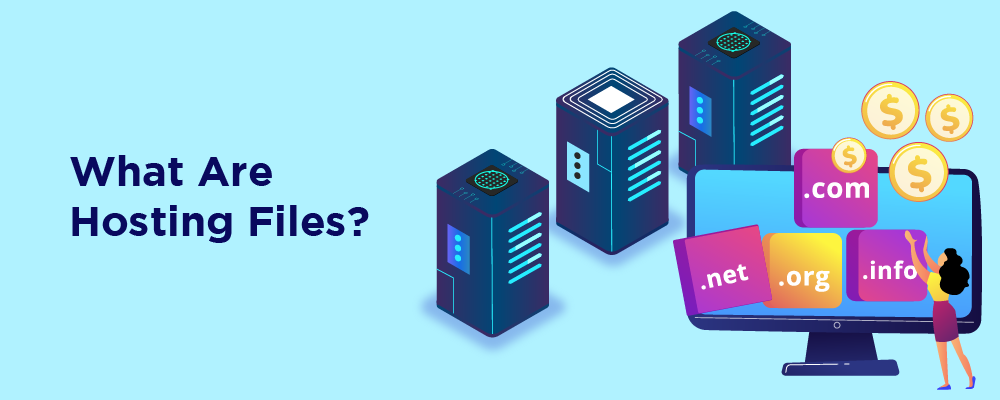
First, a web server has to store the website's files, namely all HTML documents and their related assets, including images, CSS stylesheets, JavaScript files, fonts, and video.
Technically, you could host all those files on your own computer, but it's far more convenient to store files all on a dedicated web server because:
-
A dedicated web server is typically more available. (up and running)
-
Excusing downtime and systems troubles, a dedicated web server is always connected to the Internet.
-
A dedicated web server can always have the same IP address. This is known as a dedicated IP address.
-
A dedicated web server is typically maintained by a third-party.
For all these reasons, finding a good hosting provider is a key part of building your website. Examine the various services web development companies offer. Choose one that fits your needs and budget. (Services range from free to thousands of dollars per month.) Once you have a web hosting service, you must upload your files to your web server.
Communicating through HTTP

Second, a web server provides support for HTTP (Hypertext Transfer Protocol). As its name implies, HTTP specifies how to transfer hypertext (linked web documents) between two computers.
A Protocol is a set of rules for communication between two computers. HTTP is a textual, stateless protocol.
Textual
All commands are plain-text and human-readable.
Stateless
Neither the server nor the client remembers previous communications. For example, relying on HTTP alone, a server can't remember a password you typed or remember your progress on an incomplete transaction. You need an application server for tasks like that. (We'll cover that sort of technology in other articles.)
HTTP provides clear rules for how a client and server communicate. Only clients can make HTTP requests, and then only to servers. Servers can only respond to a client's HTTP request.
-
When requesting a file via HTTP, clients must provide the file's URL.
-
The web server must answer every HTTP request, at least with an error message.
On a web server, the HTTP server is responsible for processing and answering incoming requests.
- Upon receiving a request, an HTTP server first checks if the requested URL matches an existing file.
- If so, the web server sends the file content back to the browser. If not, an application server builds the necessary file.
- If neither process is possible, the web server returns an error message to the browser, most commonly 404 Not Found. (The 404 error is so common that some web designers devote considerable time and effort to designing 404 error pages.)
Static vs. Dynamic Content

Roughly speaking, a server can serve either static or dynamic content. Remember that the term static means "served as-is". Static websites are the easiest to set up, so we suggest you make your first site a static site.
The term dynamic means that the server processes the content or even generates it on the fly from a database. This approach provides more flexibility, but the technical stack is more complex, making it dramatically more challenging to build a website.
Take, for example, the page you're reading right now. On the web server hosting it, there is an application server that takes article content from a database, formats it, puts it inside some HTML templates, and sends you the results. In this case, the application server is called Kuma. Kuma is built with the programming language
Python (using the
Django framework). The Mozilla team made Kuma for MDN's specific needs, but many similar applications are built on many other technologies.
There are so many application servers that it's difficult to suggest a particular one. Some application servers cater to specific website categories like blogs, wikis, or eCommerce; others, called
CMSs (content management systems), are more generic. If you're building a dynamic website, take the time to choose technology that fits your needs. Unless you want to learn web server programming (which is an exciting area in itself!), you don't need to create your own application server.
Clients and Servers

Computers connected to the web are called clients and servers.
Clients
Clients are the typical web user's internet-connected devices (for example, your computer connected to your Wi-Fi, or your phone connected to your mobile network) and web-accessing software available on those devices (usually a web browser like Firefox or Chrome).
The four modern web browsers are Firefox, Safari, Chrome, and Opera. DashingD3js.com will focus on the web browsers that use WebKit. WebKit is a layout engine software designed to allow web browsers to render web pages.
WebKit powers the Apple Safari and Google Chrome browsers. We will use Google Chrome for the rest of the sections of the Web Inspector Developer Tool. More details are mentioned below. Much later, we will get into cross-browser compatibility.
The web browser's primary function is to display a web resource. The browser requests the resource from the server and displays the resource in the browser window. The resource can be HTML, images, PDFs, text, or other media.
The web browser requests a resource from the server using the Uniform Resource Identifier (URI) of the resource. For most cases, the URI is actually a URL. A URL is the Uniform Resource Location. URL refers to the location, and URI refers to identity.
After the browser receives the requested resource, it must interpret and display the resource. The way a browser interprets and displays HTML and CSS files is specified in the HTML and CSS specifications. HTML5 and CSS3 are specific HTML and CSS specifications.
Web Servers
Servers are computers that store webpages, sites, or apps. When a client device wants to access a webpage, a copy of the webpage is downloaded from the server onto the client machine to be displayed in the user's web browser.
On the hardware side, a web server is a computer that stores web server software and a website's component files. (for example, HTML documents, images, CSS stylesheets, and JavaScript files) A web server connects to the Internet and supports physical data interchange with other devices connected to the web.
On the software side, a web server includes several parts that control how web users access hosted files. At a minimum, this is an HTTP server. An HTTP server is software that understands URLs (web addresses) and HTTP (the protocol your browser uses to view webpages). An HTTP server can be accessed through the domain names of the websites it stores, and it delivers the content of these hosted websites to the end user's device.
At the most basic level, whenever a browser needs a file that is hosted on a web server, the browser requests the file via HTTP. When the request reaches the correct (hardware) web server, the (software) HTTP server accepts the request, finds the requested document, and sends it back to the browser, also through HTTP. (If the server doesn't find the requested document, it returns a 404 response instead.)
The web server sends out pages when they are requested by a web browser, such as Microsoft Internet Explorer, Mozilla Firefox, or Google Chrome. The host and client communicate using an agreed ’language’ called HTTP (HyperText Transfer Protocol). This is why web page addresses begin with http:// and so on.
To publish a website, you need either a static or a dynamic web server.
A static web server, or stack, consists of a computer (hardware) with an HTTP server (software). We call it "static" because the server sends its hosted files as-is to your browser.
A dynamic web server consists of a static web server plus extra software, most commonly an application server and a database. We call it "dynamic" because the application server updates the hosted files before sending content to your browser via the HTTP server.
For example, to produce the final webpages you see in the browser, the application server might fill an HTML template with content from a database. Sites like MDN or Wikipedia have thousands of web pages. Typically, these kinds of sites are composed of only a few HTML templates and a giant database rather than thousands of static HTML documents. This setup makes it easier to maintain and deliver the content.
To review: to fetch a webpage, your browser sends a request to the web server, which searches for the requested file in its own storage space. Upon finding the file, the server reads it, processes it as needed, and sends it to the browser. Let's look at those steps in more detail.
Other Factors
The client and server we've described above don't tell the whole story. There are many other parts involved, and we'll describe them below.
For now, let's imagine that the web is a road. On one end of the road is the client, which is like your house. On the other end of the road is the server, which is a shop you want to buy something from.
In addition to the client and the server, we also need to say hello to the following:
Internet Connection
Allows you to send and receive data on the web. It's basically like the street between your house and the shop.
TCP/IP
Transmission Control Protocol and Internet Protocol are communication protocols that define how data should travel across the internet. This is like the transport mechanisms that let you place an order, go to the shop, and buy your goods. In our example, this is like a car or a bike (or however else you might get around).
DNS
Domain Name Servers are like an address book for websites. When you type a web address in your browser, the browser looks at the DNS to find the website's real address before it can retrieve the website. The browser needs to find out which server the website lives on, so it can send HTTP messages to the right place (see below). This is like looking up the address of the shop so you can access it.
Component Files
A website is made up of many different files, which are like the different parts of the goods you buy from the shop. These files come in two main types:
Code Files
Websites are built primarily from HTML, CSS, and JavaScript, though you'll meet other technologies a bit later.
Assets
This is a collective name for all the other things that make up a website, such as images, music, video, Word documents, and PDFs.
How Does the Web Work?

When you type a web address into your browser (for our analogy, that's like walking to the shop):
-
The browser goes to the DNS server and finds the real address of the server that the website lives on (you find the address of the shop).
-
The browser sends an HTTP request message to the server, asking it to send a copy of the website to the client (you go to the shop and order your goods). This message, and all other data sent between the client and the server, is sent across your internet connection using TCP/IP.
-
If the server approves the client's request, the server sends the client a "200 OK" message, which means "Of course, you can look at that website! Here it is", and then starts sending the website's files to the browser as a series of small chunks called data packets (the shop gives you your goods, and you bring them back to your house).
-
The browser assembles the small chunks into a complete web page and displays it to you (the goods arrive at your door — new shiny stuff, awesome!).
What Is the DNS?
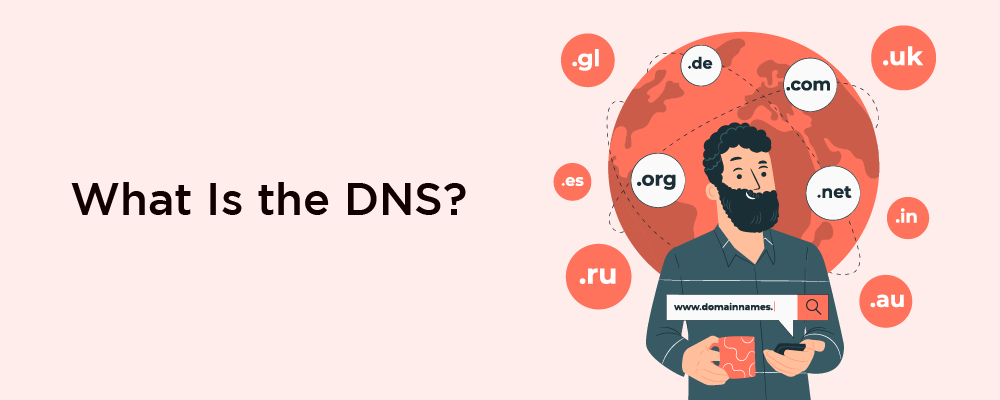
Real web addresses aren't the nice, memorable strings you type into your address bar to find your favorite websites. They are special numbers that look like this: 63.245.215.20.
This is called an IP address, and it represents a unique location on the web. However, it's not very easy to remember, is it? That's why Domain Name Servers were invented. These are special servers that match up a web address you type into your browser (like "mozilla.org") to the website's real (IP) address.
Websites can be reached directly via their IP addresses. You can find the IP address of a website by typing its domain into a tool like IP Checker.
What Are Packets?
Earlier, we used the term "packets" to describe the format in which the data is sent from server to client. What do we mean here? Basically, when data is sent across the web, it is sent as thousands of small chunks, so that many different web users can download the same website at the same time. If websites were sent as single big chunks only one user could download one at a time, which would obviously make the web inefficient and not much fun to use.
The Building Blocks of Web Development
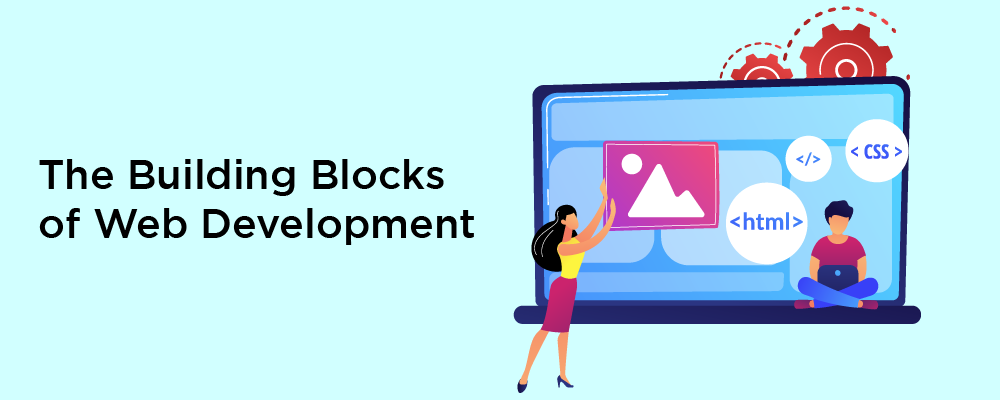
Even if you’ve never build
web applications, the chances are you have heard of dozens of frameworks and packages that you know have something to do with UI. JQuery, Angular, Bootstrap, JavaScript,
ReactJS, Babel, Typescript, HTML5, the list doesn’t end. Many of these may sound familiar, but do you know how they fit together? Where do you start if you want to break into the world of UI development?
The good news is that all UI tools have a common denominator that’s set by the web browser. Browsers vary on what they support, but all modern web browsers support the following UI technologies:
HTML, CSS, and JavaScript
The Hypertext Markup Language (HTML) resource is the primary markup language for displaying web pages. HTML elements are the building blocks of the HTML web page. The elements consist of a pair of tags (starting and ending tags) and the textual or graphical content inside of the tags.
The simplest way to look at this is that HTML is the basic building block of your page and defines the basic content you will display, such as what text and images show up and in what order.
The Cascading Style Sheet (CSS) resource is the style sheet language used to describe the document's presentation. The presentation includes both the look as well as the formatting. CSS can be applied to HTML, XML, and, most notably, to D3.js Scalable Vector Graphics (SVG).
CSS formatting can be applied to HTML elements as an attribute.
The "Style" part of the line is the style sheet language describing that the font size should be 12 pixels. When the CSS formatting is applied directly to the HTML element as an attribute, it is called "in-line CSS".
CSS adds styles to the HTML to specify colors, spacing, font sizes, animation, and much more. JavaScript is there to allow user interactions to dynamically update the HTML and CSS, seamlessly refreshing what is shown on the browser. These are the technologies that the browser actually supports and understands, and they are technically all you need to create amazing web applications.
If you are building a small web application, you may be just fine using the basics. But as the scope and complexity of your web application grows, you may start to realize that HTML and CSS weren’t designed with complex and
dynamic web applications in mind.
JavaScript is a text-based programming language used both on the client-side and server-side that allows you to make web pages interactive. Where HTML and CSS are languages that give structure and style to web pages, JavaScript gives web pages interactive elements that engage a user.
However, HTML, CSS, and JavaScript also weren’t designed to support websites that would display nicely on both a desktop and an iPhone. The current specifications of HTML, CSS, and JavaScript have minimal to no support for core programming paradigms such as reusable modules, state management, and asynchronous processing.
You might have guessed it already, but these shortcomings are the reason behind all the other UI technologies you’ve heard of. Web standards are evolving, and newer versions of CSS and JavaScript address some of the current limitations. Unfortunately, if commonly used browsers don’t support the new standards, you can’t use them.
Document Object Model (DOM)
.png)
Document Object Model (DOM) is a convention for representing and interacting with objects in HTML, XML, and XHTML documents. The DOM is separated into three parts: Core, HTML, and XML. The DOM allows programs and scripts to dynamically access and update the structure, content, and style of a document. A DOM structured document has a DOM Tree which can be used to address, manipulate, and navigate the structure of the Document.
The structure of the DOM Tree can be navigated in reference to the relationships of its branches. This gives us descendants, ancestors, as well as parents, children, and siblings. Thus we can specify a particular element in the DOM, look at the DOM tree, and select all of the elements above, below, or along it easily.
Scalable Vector Graphics (SVG)
.png)
Scalable Vector Graphics (SVG) is a family of specifications for creating two-dimensional vector graphics. Vector graphics are not created out of pixels. Vector graphics are created with paths having a start and end point, as well as points, curves, and angles in between. Since Vector Graphics are not created out of pixels, they can be scaled up to larger or smaller sizes without losing image quality.
SVG images and their behaviors are defined in XML text files. The XML text can be included in an HTML document. This text means that images can be created and edited in a text editor. Also, since the DOM includes XML as part of the DOM specification, we can use the DOM Tree to access and update the structure, content, and style of SVG Images.
SVG comes with a basic set of shape elements:
-
Rectangle
-
Circle
-
Ellipse
-
Straight Line
-
Polyline
-
Polygon
Web Inspector
The Web Inspector comes with WebKit-based browsers. We will use Chrome Web Inspector. This is what it looks like:
We use the Web Inspector to see the current state of the DOM. We also use the Web Inspector to use the JavaScript console for debugging and testing code. Lastly, the Web Inspector also lets you highlight an element, right-click on it, and then Inspect the Element:
This allows you to see the DOM elements for the specific thing you highlighted on your screen.
Transpliers
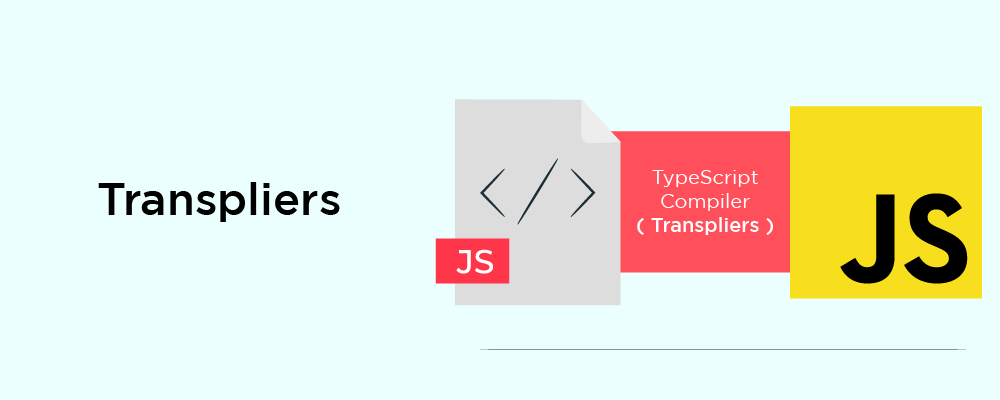
A transpiler takes one version of a coding language and transforms it into another. JavaScript 6,7, and 8 all introduce some nice functionality that makes web development much easier. One key example is JavaScript 6’s ability to export and import modules. This is all but essential when writing an enterprise web application.
Two widely used transpilers are Babel and TypeScript. Both of them allow you to write code to a later specification of JavaScript but transform your code back down to a JavaScript version that most browsers will support. TypeScript even goes further than JavaScript standards by bringing in Java like features such as strict typing on variables and parameters.
Precompiled CSS

SASS, SCSS, and LESS are all languages that add additional functionality above CSS but can be compiled down to CSS to be used by the browser. A major benefit is to provide the ability to create reusable styles and constants.
Consider that you build a web application and you have a set of colors that you use. With CSS, there are some ways to set a color for a group of components, but often you wind up repeating the same colors throughout your CSS code. If you use SASS, for example, you can just define a set of constants and reference those. If you want to update these in the future, you just have to do it in one place. This is often enough to justify the use of precompiled CSS.
JavaScript Libraries
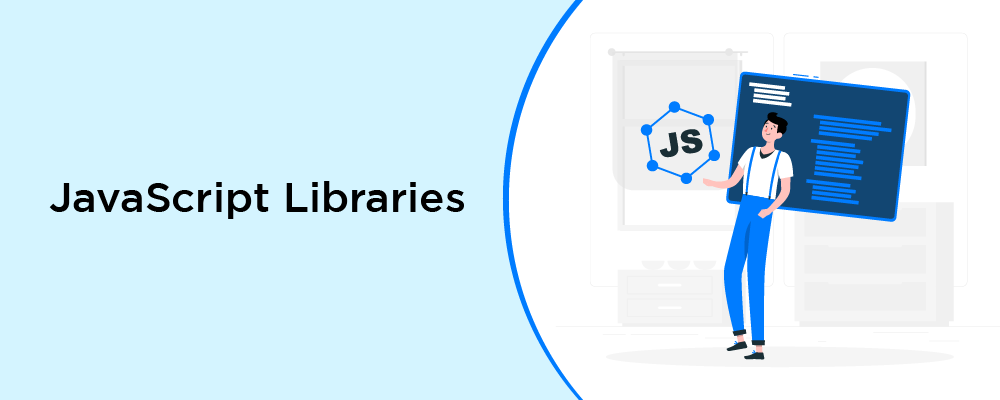
JQuery and Lodash are two popular JavaScript libraries. They are written with standard JavaScript and, among other things, provide utility methods to greatly assist you when building a Web Application. If you want to remove some of the hassles of iterating through arrays and objects, consider checking out one of these or the many available JavaScript libraries out there.
JavaScript Frameworks
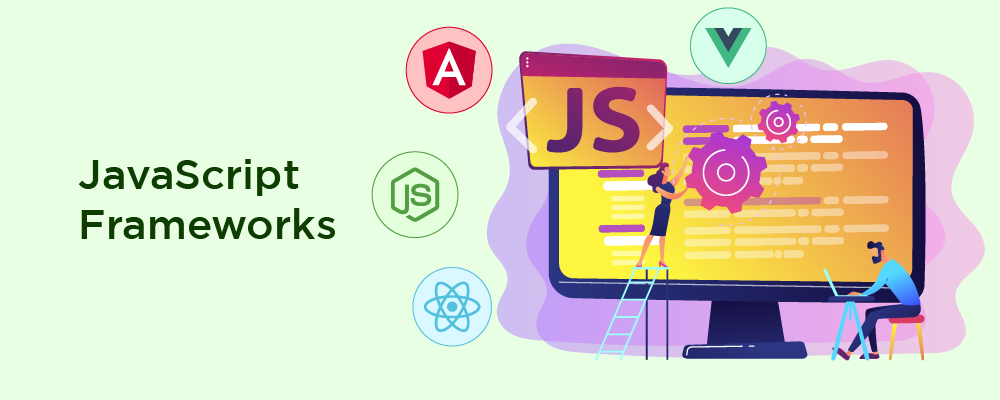
If you are building a very complex web application, you’ll need help defining reusable web components, managing state, and creating a user-driven dynamic experience. This is where technologies such as Angular, ReactJS, and Vue come into the picture. There is nothing in these frameworks that can’t be done with standard HTML, CSS, and JavaScript. However, if your application is complex, you'll probably have come close to creating your own JavaScript framework by the time you've written all the plumbing and code necessary.
React.JS
Developed and maintained by Facebook, React.js runs on the browser and is used as a front-end library by developers. Similar to other libraries, it also runs on web servers, such as Apache, or in conjunction with the backend, such as Rails or PHP.
React.js was initially designed to work on web browsers. Unsurprisingly, the library has a ReactDOM library designed specifically to work alongside the browser’s DOM. However, with time, this library has transformed into a cross-platform framework we all know as React Native.
React is perfect for building web apps and resolving issues related to low performance caused by DOM manipulation, as well as slow user interactions. It uses a Virtual DOM to save changes. At the same time, the library leverages an algorithm that analyzes the application’s state and figures out the difference between two UI states.
Because of its dynamic nature, React.js is the automatic choice for developers who want to build highly robust native and hybrid applications.
Angular
Angular is one of the latest web technologies designed specifically to develop dynamic web applications. With this framework, you can easily create front-end-based applications without needing to use other frameworks or plugins.
The features include well-made templates, MVC architecture, code generation, code splitting, etc. All the expressions are like code snippets enclosed within curly braces and do not use any loops or conditional statements.
Dart

Dart is a Google product that offers a lot of opportunities for constructing well-structured apps. It is a new-gen high-performance language that gives pretty much flexibility to
dart developers. Google regularly upgrades Dart, but if compared to JavaScript, it still has fewer capabilities and a smaller community.
CoffeeScript
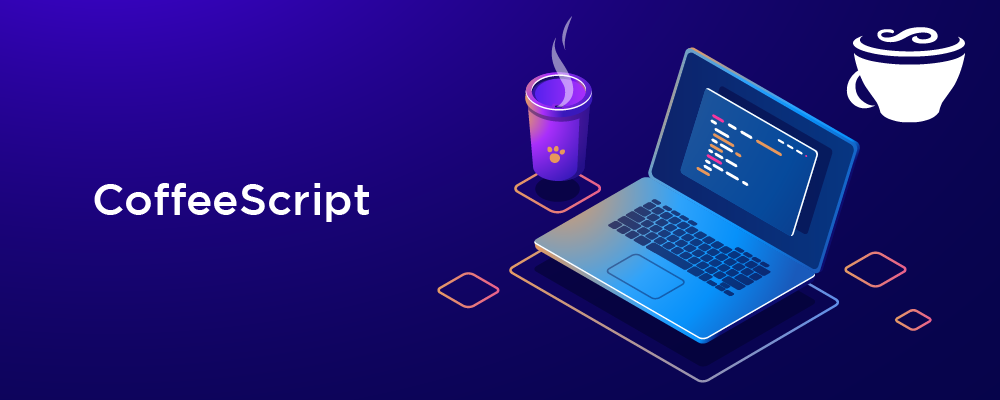
CoffeeScript is transcomplied into JS. It improves the readability of JavaScript and makes the code simpler and shorter. CoffeeScript can also be used with Node.js. It is not a modification or a subgroup of JavaScript, though. But if you want to use it for coding, you need to know JavaScript anyway. Drawbacks of CoffeeScript include a need for compilation, a limited feature set, and few specialists writing in it.
Meteor JS
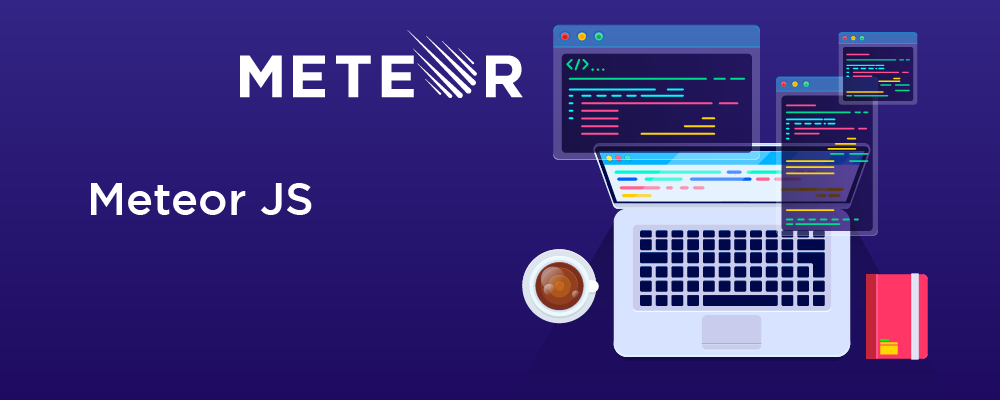
Meteor JS is written in Node.js, and it makes it possible for you to create real-time web applications for different platforms. The framework for creating simple websites for personal use really stands out with Meteor JS.
This is an open-source isomorphic JavaScript web framework, which means that the webpage loading time is significantly shorter. JavaScript stack makes it possible to get the same results with fewer lines of code than usual.
Vue.js
Vue.js is the newer kid on the block of front-end javascript frameworks, which aims to provide a coherent, more “batteries-included” approach to
web application development than other popular libraries like React and Angular 2.
Other Front-End Frameworks

Also called “CSS frameworks,” front-end frameworks are packages containing pre-written, standardized code. They are here to help you hit the ground running when building new websites.
There are hundreds of CSS frameworks out there, with their own strengths and weaknesses. When choosing the right framework for your project, make sure you research its complexity. Using a complex framework for a basic project wouldn't make sense, but a too-simple framework might not be scalable for a large website.
Bootstrap
Bootstrap is one of the most popular open-source CSS frameworks. It was created by Twitter developers and initially released in 2011. Bootstrap includes HTML, CSS, and JavaScript components and allows the creation of responsive websites of all complexities and sizes. It’s also very accessible to those who are just getting started in web development.
Semantic-UI
Semantic-UI is a component framework for theming websites It is based on the concept that at the core of sites are not individual HTML tags but individual interface components like buttons, modals, or dropdowns.
Foundation
Foundation began as an internal CSS style created by the ZURB design agency. Foundation is a good choice if you’re looking for a flexible and powerful framework that wouldn’t limit you in any way.
Materialize
Materialize is a front-end framework based on the
Material Design visual language. It’s fast, bold, intentional, and has a low learning curve. You can check out the examples of websites built with Materialize
here.
Material UI
Material UI is among the world's most popular front-end frameworks, also inspired by Google’s Material Design. It’s open-source and based on ReactJS. With the components in Material UI, it is easy to make use of the Material Design elements in your web or mobile applications.
Backend Frameworks
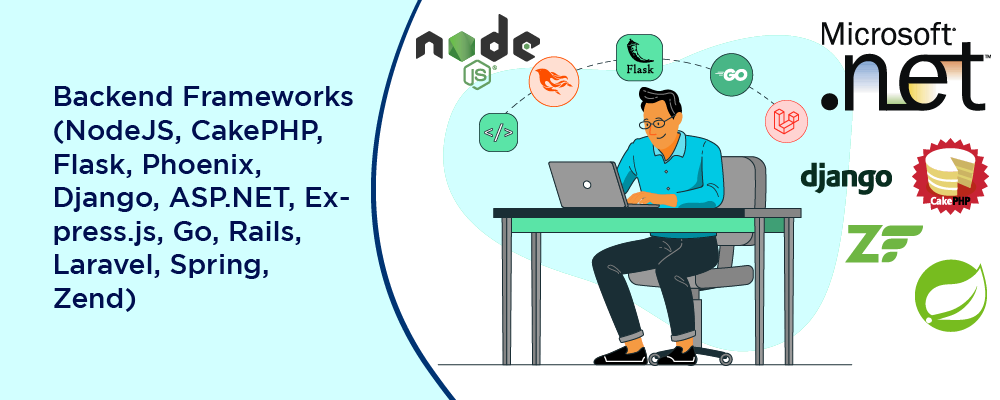
A framework (sometimes referred to as a platform) is the next “layer” in your website. You can think of it as Lego pieces making up your website. Essentially, a framework is a group of libraries of optimized and field-tested code that provide building blocks you can use to construct a website.
They allow reusing code from common functions without “reinventing the wheel”. Chances are, your
backend web developers have a framework or platform that they use most often, and I would recommend that you leave this choice to them.
Just be sure that the framework/platform is one that other web developers will be able to work with if you should need to move to another web partner. Most modern complex websites rely on frameworks since they make web development more time- and cost-effective. They routinely have pre-written solutions for most of the functions and features commonly used on websites.
NodeJS
NodeJS is a highly scalable back-end library written in JavaScript. The technology is known to be fast, lightweight, and asynchronous. Being event-driven, it has non-blocking I/O, making it easier for web apps to handle real-time data streaming well.
Additionally, the library is ideal for building modern solutions that rely on Web Sockets, event queues, and microservices. Due to NodeJS’s tremendous flexibility,
67.36% of developers have admitted they love using Node JS.
What makes Node unique is that we can also use it as a single programming language for writing back-end as well as front-end code for server-side applications. However, for that, we must use JavaScript code in the runtime environment. With giants like Twitter, NASA, and Walmart using
NodeJS development, NodeJS is understandably one of the best server-side languages.
CakePHP
CakePHP is one of the first PHP frameworks to be released back in 2005. Since then, it has come a long way and is now known as a modern PHP framework that allows
CakePHP developers to build quickly. CakePHP uses clean MVC conventions and is highly extensible, making it a great choice for building both large and small applications.
Flask
Flask is another Python-based backend framework. However, unlike Django, it is lightweight and more suited for the development of smaller projects. Flask offers support for things like Jinja2 templating, secure cookies, unit testing, and RESTful request dispatching. It also provides extensive documentation and is a great solution for Python programmers who don't need all the bells and whistles that Django ships with.
Phoenix
Phoenix is a backend framework that works with Erlang's Virtual Machine and is written in Elixir. Given the fact that Elixir is a functional language, it may not be as popular as other object-oriented languages; however it was designed for building scalable and maintainable applications. Phoenix uses a combination of tried and true technologies with fresh ideas of functional programming.
Django
Django is a high-level Python framework that promotes rapid development and well-organized, pragmatic software design. Django is known to be one of the most secure web frameworks out there, as it’s one of the fastest to react to new vulnerabilities.
It is a Model-View-Template framework. It follows the Convention Over Configuration pattern and the DRY pattern as well. Django provides techniques and tools for developers to build a secure website or implement the security features in the framework itself, like preventing code execution in the template layer.
Django’s community is part of the wider Python community and actively contributes a whole lot of useful packages and utilities. If you want to explore around, just type in “Django” on PyPI, and you’ll come across over 4,000 packages ready for use.
ASP.NET
ASP.NET is an open-source server-side framework for building web apps with .NET and C# developed by Microsoft. Since its release in 2002, the framework has been rapidly changing and has never lost its wide popularity.
Express.js
Thanks to the skyrocketing popularity of Node.js,
Express is quickly becoming one of the most trending frameworks nowadays. It is popular amongst Accenture, IBM, Uber, and many other companies, and it’s also compatible with other frameworks such as Kraken, Sails, and Loopback.
Express prides itself as a minimal, fast, and unopinionated framework. It provides some core framework functionalities without obscuring the features of Node and leverages the robust performance of asynchronous Node.js. It’s also quite flexible and supports full applications as well as REST API, as well. Perhaps the biggest drawback of Express is the fact that there’s no defined way of doing things, at least for beginners.
Go
Go, or Golang is an open-source programming language. It’s statically typed and produces compiled machine code binaries. Developers say that Google's Go language is the C for the twenty-first century when it comes to syntax. However, this new programming language includes tooling that allows you to safely use memory, manage objects, collect garbage, and provide static (or strict) typing along with concurrency.
Rails
Ruby On Rails is often mentioned among JavaScript, Python, or Java - but if you dig deeper, you’ll quickly find out that it’s not an independent coding language at all; but a web framework written on top of the Ruby programming language.
It is a Model-View-Controller framework that uses Ruby, and it’s a popular framework that many developers love. Airbnb, GitHub, Hulu, and Shopify are primary users of Rails. Rails framework is considered a beginner-friendly framework that helps beginners get started with web development quite quickly.
There are many useful gems for rails, which are library-like dependencies that extend the functionalities of your application and help you develop even faster and more efficiently. The Rails community is quite reliable and friendly, and there are many tutorials, screencasts, and resources that can help you become a rails expert in no time.
Ruby On Rails is very friendly for beginners and has an active and supportive community behind it. The main disadvantage of rails lies in the fact that they take quite some effort to deploy and run in a production environment, and the learning curve of rails becomes steep once you dive deeper into the framework to unravel the magic behind it.
Laravel
Laravel is a Model-View-Controller framework that uses PHP, which is one of the most popular languages on the web. It’s relatively young compared to other frameworks on this list.
Laravel comes with API support out of the box, and it also possesses a decent amount of packages that could extend its reach. Laracasts is a screencasts tutorials website with over a thousand videos on PHP, Laravel, and frontend technologies in the Laravel ecosystem that could be considered to be a beginner’s heaven. In terms of performance, however, Laravel doesn’t compare to Django or Express, which might be a drawback for massive projects.
Spring
Spring is a Model-View-Controller framework that uses Java, the all-time popular language. Websites like Wix, TicketMaster, and BillGuard are users of this framework. Spring possesses many sister projects that boost its performance and let you scale your business quickly. The fact that it uses Java, a strongly typed language, is a severe pro to many
spring boot developers. The learning curve might be quite steep, though, especially if you don’t know Java.
Zend
Zend is an open-source framework based on PHP, focused on building more secure and reliable web apps and services. It is one of the first enterprise-level MVC frameworks, which came before the current superhits such as Laravel or Symfony, and many popular PHP engines such as Magento were built in Zend.
Today Zend is still under active development, and even though it may be less popular than its open-source siblings, it is a great solution for a large-scale PHP app.
Git Clients

There are a number of Git GUI clients available for various operating systems. It’s good to try out a few before settling down on the one which works best for you and your team.
Github Desktop
Built by GitHub, it’s a tool that allows you to interact with
GitHub from the desktop. It’s got a rich interface that allows managing code without the command window.
GitHub Desktop 2.0 now also supports rebasing and stashing — two most requested features that the original version lacked.
GitKraken
GitKraken is a cross-platform Git client for Mac, Windows, and Linux. GitKraken has got an intuitive UI, built-in code editor, tasks tracking and integrates with all possible repositories.
SourceTree
SourceTree is a free Git client available for Mac and Windows, which is developed by Atlassian. It’s perfect for Git newbies and yet has all the advanced features to satisfy pro-level users.
GitCola
GitCola is another free and quite powerful Git graphical user interface that is written in Python. It’s less popular than other clients but still has a small yet active community behind it.
SmartGit
SmartGit is another cross-platform (Windows, Mac, Linux) Git client. It’s got all the features a web developer might need and is quite customizable to individual preferences and workflow. Unlike some other clients, you’d have to purchase a license to use it.
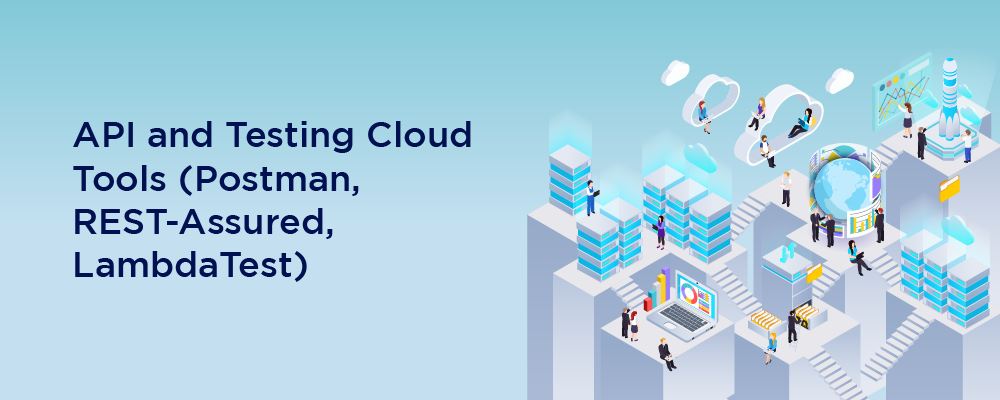
Web APIs are a crucial part of web developers’ work nowadays. It’s important to have reliable tools to build, test and communicate with the APIs efficiently and securely.
Postman
Postman is a collaboration platform for API development, currently used by over 8 million developers and leading companies worldwide. Postman's features aim to simplify each step of creating APIs and streamline collaboration. There’s a very active
community behind the tool, running regular offline and online events.
REST-Assured
REST-Assured is a testing and validating tool for REST services in Java. REST Assured brings the simplicity of using dynamic languages into the Java domain.
LambdaTest
The process of validating the rendering of a website over different browsers is called cross-browser testing. Every browser & browser version has a unique rendering engine which is responsible for displaying your website to your users. This is why you may often find the same HTML, CSS & JavaScript code to appear differently from one browser to another.
As a developer, you are responsible for unit testing your code before you push it to the staging environment where your QAs could hop in. You should ensure that your web application stays cross browser compatible even after you push your code changes. Especially, if you are applying any fallbacks.
However, testing dozens or even hundreds of browsers + OS combinations could be troublesome. This is exactly where
LambdaTest turns out to be an effective tool to help you perform
cross browser testing on the cloud. It also allows you to perform both manual & Selenium test automation through a cloud-based
Selenium Grid.
Cross-browser testing is pivotal for every release cycle in any web development project. LambdaTest ensures that you do so without the hassle of maintaining an expensive in-house device lab or laggy virtual machine setup. That way, you can test your code changes as fast as you can deliver them.
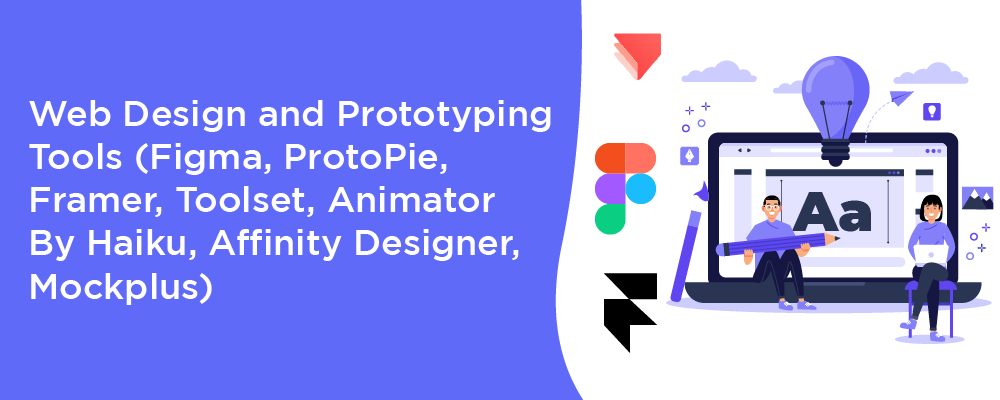
It’s no longer enough just to code websites or apps. If you want people to actually use them, you need to put a lot of effort into the UI and UX. As a result, digital companies are doubling and tripling the size of their design teams.
As a result, most web developers are interacting and cross-collaborating very closely with web designers. Therefore, it’s important to have shared tools that might help to facilitate these workflows.
Figma
Figma is currently the world's leading UI design software. It’s gained popularity mainly due to its collaboration features, allowing multiple people to work on the same document simultaneously. It also has decent prototyping and hand-off features, which eliminate the need to switch between multiple tools.
ProtoPie
ProtoPie is an advanced visual prototyping tool. It would fit great into the workflows of designers and developers looking to quickly prototype how something is supposed to work (for example an e-commerce website), without wasting time writing code.
Framer
Framer is a great choice for those designers and developers who are looking to create advanced high-fidelity prototypes made of real UI React components. It’s a perfect bridging tool between the design and development teams, allowing them to collaborate and rapidly experiment in the shared space.
Toolset
Toolset is a page builder which allows users to build custom elements for websites quickly and without coding.
It’s a great option for web developers and web designers who are looking to complete complex projects quickly which require a number of custom features, including custom post types, a custom search, front-end forms and many more. Instead of adding multiple tools, you can just add Toolset for your custom development needs.
Its latest development, Toolset Blocks, means you can design websites with dynamic content without coding in just minutes.
Animator By Haiku
With Animator you can create high-fidelity timeline animations for apps and websites. You first design the animations visually or using a code editor and can then export them for various platforms.
Affinity Designer
A solid vector graphics tool is a must-have for any web developer. While Adobe Illustrator still remains a classic option, there are other great tools available —
Affinity Designer is one of them. It has all the same tools as AI essentially but comes with a perpetual licence, and thus is more affordable.
Mockplus
Mockplus is a robust all-in-one product platform for prototyping, collaboration, and design systems. You can quickly turn ideas into functional prototypes with components, icons, and interactions. Bring designers, product managers, and front-end developers to work better and together. Mockplus helps you create a better design experience faster and easier.
Package Managers
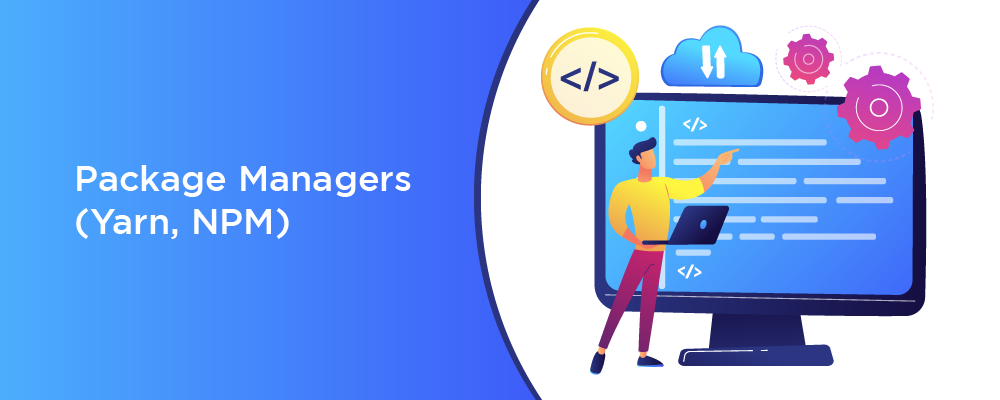
Web developers use package managers to automate the process of installing, upgrading, configuring, and removing computer programs. Once the user requests a package using the particular package manager, it finds the requested package from a known location, downloads it and then installs it, notifying of any additional actions necessary.
Yarn
Yarn is one of the newest package managers out there, built by Facebook. It’s loved by the community for its superior to most other package managers' speed, reliability and security. Getting started with Yarn is easy — check out the official docs here.
NPM
NPM is the default package manager for the JavaScript runtime environment NodeJS. The release of Yarn strongly affected the popularity of NPM, but it started to come back with the release of NPM 5 halfway through 2017, which fixed many of the initial shortcomings.
Design Patterns
Web development can be extremely complex and time-consuming. With so many frameworks and a diverse pool of programming languages, it is hard to standardize the development process. This is why many web developers follow design patterns to implement best practices in software development.
Design patterns provide developers with solutions to general problems and outline the best practices for developing certain solutions. Software developers have developed these patterns over time through trial and error.
They can significantly speed up testing by giving developers tested and proven development methodologies. In software design, developers must consider several issues, most of which are not visible after implementation.
Using design patterns improves code reusability and helps you avoid small issues that can cause larger problems in the future. Aside from making your code reusable, it makes the code and its architecture cleaner and more readable for others.
New developers often find it hard to implement software design techniques for their problems. It is usually difficult to implement specific software designs to a larger set of problems. However, design patterns give you a general solution you can later customize according to your problem without letting going of essential practices during development.
Additionally, design patterns enable developers to name common software interactions and processes, making it easier for them to communicate. Gradually, these common design patterns are improved and transformed into more flexible and refined than simple ad-hoc designs.
Architectural Patterns
As software becomes increasingly complex, developing, maintaining, and enhancing apps is not easy. Software architecture patterns allow developers to construct software architecture conveniently instead of reinventing the wheel. They provide a structure or template for your solution, and help resolve complex design problems.
That said, architectural design patterns differ from traditional design patterns (i.e., behavioral, creational, and structural) in several ways. They rely on components instead of classes and utilize multiple hybrids and variants found in other design patterns.
Moreover, traditional design patterns utilize one type of entity (mainly classes from OOP) and display the relationship between different classes in a solution. In contrast, architectural patterns leverage a range of different component types, where every component has successively smaller components.
Model View Controller (MVC)
Model–view–controller (usually known as MVC) is a software design pattern commonly used for developing user interfaces that divide the related program logic into three interconnected elements.
This is done to separate internal representations of information from the ways information is presented to and accepted by the user. This kind of pattern is used for designing the layout of the page.
The MVC design pattern forms the basis for the first architectural solution of the first programming environment with a graphical user interface.
The architecture of Model-View-Controller is such that it allows you to segregate the data model, user interface, and control logic into three individual components. Since the three components are individuals, any change in a component won’t be reflected in others.
This type of architecture is well suited for those who are working on large app development projects as a team.
This is also very convenient for programmers as it helps in the quick development of apps. For example, some members could work on data models, some on the user interface, and the remaining on designing the database structure. To put it simply, MVC helps in distributing the work within a team. This helps in improving the overall performance.
MVC has three main components.
Model
It basically represents the data that is to be displayed on the screen. In most cases, this refers to the communication between the databases. This communication can be in the form of adding new data, changing existing ones, or selecting specific data. It performs operations on the raw data. The data displayed by it to the user could be in any form.
View
View is used for displaying the data taken as input by the model to the user. It represents the User Interface components like HTML and XML. It receives at the input a set of raw data that must be transmitted to the user and formats it following the requirements of the user.
Controller
As the name suggests, the Controller is responsible for handling all the processes; that is, it is responsible for resolving all the external requests and fulfilling these requests. It takes the user’s data through the model to view, acting as a mediator between the two.
Model View Presenter (MVP)
Model–view–presenter (MVP) is a derivation of the Model–view–controller (MVC) architectural pattern. Since it is a derivation of MVC, it has many features similar to it. It appeared for the first time in IBM and then in Taligent during the 90s.
In MVP, the Presenter assumes the functionality of the “middle man”. In MVP, all presentation logic is pushed to the presenter.
Although
MVP is a derivation of MVC, they do have their slight differences.
MVP has three main components.
- Model
- View
- Presenter
Model
The Model represents a set of classes that describes the business logic and data. It also defines business rules for data means how the data can be changed and manipulated.
View
View is used for making interactions with users like XML, Activity, and fragments. It has got nothing to do with the logic that is to be implemented in the process.
Presenter
It is the processing unit of the system. The presenter gets the input from the View, processes the data with the help of the Model, and passes the results back to View after the processing is done.
To simplify the MVP model, the presenter responds to the input data and returns it to View after the processing is done. View and Presenter are not related to each other and interact only through the interface.
Model View View-Model
Model–view–view model (MVVM) is a software architectural pattern that facilitates the separation of the development of the graphical user interface (the view) – be it via a markup language or GUI code – from the development of the business logic or back-end logic (the model) so that the view is not dependent on any specific model platform.
In other words, it supports a two-way data channel between the View and View-model. It brings together the best strengths of MVC and MVP by reducing the limitations. It is commonly used in designing the architecture of an application.
MVVM has three main components.
Model
Model used in MVVM is similar to the model used in MVC, consisting of the basic data required to run the software.
View
View is a graphical interface between the user and the design pattern, similar to the one in MVC. It displays the output of the data processed.
View-Model
View-Model is, on one side, an abstraction of the View and, on the other, provides a wrapper of the Model data to be linked. That is, it comprises a Model that is converted to a View, and it also contains commands that the View can use to influence the Model.
Event-Driven Architecture
In most programs, developers create mechanisms that listen for events to respond to. This mostly happens in networking apps or software that interacts with humans directly. In these situations, you sometimes need to process data, while in other cases, there’s no need.
Event-driven architecture allows developers to manage data processing needs by creating a central unit. This unit accepts all data and then reassigns it to modules meant for handling that particular type of data. The exchange of data generates an event that gets delegated to a module or code meant for that data type.
When we are programming web pages in JavaScript, we write modules that respond to certain events, such as keystrokes or mouse clicks. The web browser manages all inputs and is responsible for delegating events to the right code.
There are several types of events in a browser. However, modules only interact with events directly related to them. This makes event-driven architectures different from layered architecture, which we will discuss next.
Event-driven architectures are known for being easily adaptable to complexity. You can extend your code when new event types appear in the process. At the same time, event-driven architectures are excellent at dealing with complex and chaotic environments.
That said, there are a few disadvantages to implementing event-driven architectures. First, testing complex models is difficult. Although you can easily test individual modules, you need a fully functioning system to test their interactions.
You can face issues while structuring error handling, especially since multiple modules must handle the same events. When the central unit buffers messages arriving in bursts, the messaging overheard between these events can slow the processing speed.
In case a module fails, you must create a backup plan for the central unit. At the same time, building a system-wide data structure for your events can become extremely complex if their needs are not similar. Lastly, since all modules are independent; and therefore decoupled, it isn’t easy to maintain a transaction-based model for consistency.
Despite all this, event-driven architecture is favored among developers because it provides asynchronous systems to support asynchronous data flow in applications. It is ideal for web apps where separate data blocks interact only with a few of several modules. Also, the type of architecture makes it great for developing user interfaces.
Microservices Architecture
Think of calves, the offspring of bulls. They are small and cute in the beginning but eventually become big, untamable bulls that are hard to control. Software is not much different. As solutions grow, they get bigger and unmanageable.
The microservice architecture lets us avoid such situations. It helps developers prevent their applications from becoming inflexible, monolithic, and unmanageable. Instead of making developers create one large solution, it dictates them to build a collection of multiple small programs called microservices, which are loosely divided along with the number of features.
This means every time you must build a new feature, you can create a small new program instead, just like a litter of puppies. Several services, including Netflix, offer different features as separate services.
For instance, when you look at Netflix’s UI, components such as rating section, your favorites, and the account information section are all developed in separate batches and delivered as separate services. All of this makes your app a constellation of different services.
Although this approach makes management easier, it also has a few downsides. Firstly, you must create all services mostly independent of their interaction can make the cloud imbalanced. This is a problem because not all applications have features that we can split into different units.
Moreover, if the service is split between different microservices, it can sometimes affect performance and increase the cost of communication. Lastly, when you separate all services or features, occasionally, some parts of the web page might load later than the components, confusing the user.
The microservice architecture is best for websites and applications where you have a number of small components. You can also use this structure to create rapidly changing web apps and corporate data centers that have well-defined boundaries. Lastly, development teams who are spread out geographically can also benefit from such a system.
Behavioral Patterns
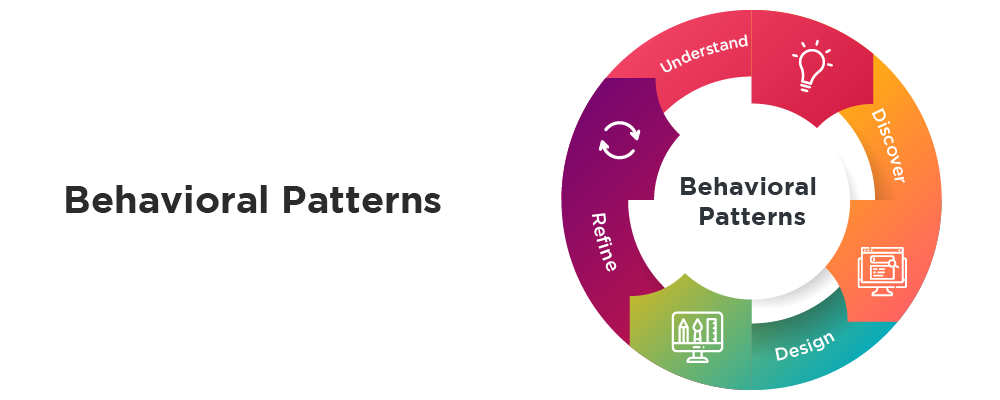
In behavioral design patterns, we describe the relationship and interaction between objects. Instead of relying on inheritance from object-oriented programming, it mainly focuses on how objects communicate with each other. Here, each object maintains references to the other.
Chain of Responsibility
A Chain of Responsibility is a behavioral design pattern that lets you pass requests along a chain of handlers. Upon receiving a request, each handler decides either to process the request or to pass it to the next handler in the chain.
Like many other behavioral design patterns, the Chain of Responsibility relies on transforming particular behaviors into stand-alone objects called handlers. In our case, each check should be extracted to its own class with a single method that performs the check. The request, along with its data, is passed to this method as an argument.
The pattern suggests that you link these handlers into a chain. Each linked handler has a field for storing a reference to the next handler in the chain. In addition to processing a request, handlers pass the request further along the chain. The request travels along the chain until all handlers have had a chance to process it.
Mediator
The Mediator is a behavioral design pattern that lets you reduce chaotic dependencies between objects. The pattern restricts direct communications between the objects and forces them to collaborate only via a mediator object.
The Mediator pattern suggests that you should cease all direct communication between the components which you want to make independent of each other. Instead, these components must collaborate indirectly by calling a special mediator object that redirects the calls to appropriate components. As a result, the components depend only on a single mediator class instead of being coupled with dozens of their colleagues.
Creational Patterns

Creational patterns help you create objects for the right class, especially if you have instances of multiple different classes. Mostly, creational patterns encapsulate information about concrete classes your system uses. At the same time, it also hides how corresponding instances of your classes are created and used together.
The solution only knows about objects and the interfaces you have defined in the abstract classes. These patterns also give you a lot of flexibility in what instances get created, who creates them, and how and when they are created.
Singleton
The Singleton pattern is the simplest design pattern for web applications. It falls under creational design patterns because it makes object creation extremely easy. In this pattern, we use a single class responsible for creating objects while ensuring that only a single object is created. The class then allows you to access its only object, which you can later access directly without instantiating the object.
Factory Method
A Factory Pattern, also known as a virtual constructor, defines the abstract class or interface for creating objects but allows subclasses to choose the class you want to instantiate. To put it simply, subclasses are responsible for creating instances of the class.
This allows you to standardize the architectural model for different application. Still, at the same time, you can also let separate applications define and give us their own objects and instantiate them on their own.
Abstract Factory
Abstract Factory pattern and is almost similar to the Factory Pattern is considered as another layer of abstraction over the factory pattern.
The abstract is also called a factory of factories. In the Abstract Factory pattern, an interface is responsible for creating a factory of related objects without explicitly specifying their classes. Each generated factory can give the objects according to the Factory pattern.
Abstract factory pattern implementation provides us with a framework that allows us to create objects that follow a general pattern. So at runtime, the abstract factory is coupled with any desired concrete factory, which can create objects of the desired type.
Structural Patterns
Structural patterns can be formed into larger structures from individual parts, generally of different classes. Rather than composing interfaces or implementations, structural object patterns describe ways to compose objects to realize new functionality.
The added flexibility of object composition comes from the ability to change the composition at run-time, which is impossible with static class composition.
Structural design patterns examine how objects and classes are composed to form larger structures. In class structural design, new structures are created through multiple inheritances.
One class inherits from more than a single-parent class to create a new structure. More commonly, object structures combine different objects to form new structures. The following seven patterns have been designated as structural.
Adapter
Adapter allows us to convert the interface of a class into another interface clients expect. It lets otherwise incompatible classes work together by converting an existing class with a new interface that makes an impedance match an old component to a new system.
The adapter is about creating an intermediary abstraction that translates, or maps, the old component to the new system. Clients call methods on the Adapter object, which redirects them into calls to the legacy component. This strategy can be implemented either with inheritance or with aggregation. The Adapter functions as a wrapper or modifier of an existing class. It provides a different or translated view of that class.
Bridge
You can make I/O processing in web apps smoother by using subclassing of an abstract base class to provide alternative implementations. This locks in compile-time binding between the interface and implementation. The abstraction and implementation cannot be independently extended or composed.
The interface object is the "handle" known and used by the client. In contrast, the implementation object or "body" is safely encapsulated to ensure that it may continue to evolve or be entirely replaced (or shared at run-time.
You can leverage this design pattern while performing run-time binding during implementation. You have a proliferation of classes resulting from a coupled interface and numerous implementations. You want to share an implementation among multiple objects. You need to map orthogonal class hierarchies.
Composite
Compose objects into tree structures to represent whole-part hierarchies. Composite lets clients treat individual objects and compositions of objects uniformly.
The application needs to manipulate a hierarchical collection of "primitive" and "composite" objects. The Processing of a primitive object is handled one way, and the processing of a composite object is handled differently. Having to query the "type" of each object before attempting to process it is not desirable.
Define an abstract base class (Component) that specifies the behavior that needs to be exercised uniformly across all primitive and composite objects. Subclass the Primitive and Composite classes off of the Component class. Each Composite object "couples" itself only to the abstract type Component as it manages its "children".
Use this pattern whenever you have "composites that contain components, each of which could be a composite".
Comparing the Top Front-End Frameworks
React
.png)
React is currently one of the most popular web development technologies today. It has several unique features that separate it from other web development platforms. Let us look at what main features it provides us.
Advantages of React
Virtual DOM
The Document Object Model is a logical structure of web documents in XML, XHTML, and HTML formats. Simply put, it is just a way of viewing data inputs, and outputs, which follows a tree structure.
Your web browsers use layout engines to parse or transform HTML syntax into a document object model, something we directly see in the browsers.
However, the way DOM traditionally processes changes, such as queries and user inputs is problematic. The server must constantly look out for these changes to respond to them. Additionally, it must update the DOM trees of the entire document, which is challenging since DOM trees contain thousands of elements today.
React resolves this problem by increasing the speed of updates through virtual DOM. The Virtual DOM is an abstract copy of the real DOM, and React.JS uses it effectively. The virtual DOM updates and implements all changes initiated by the user. However, this doesn’t have any effects on other parts of the interface, thanks to React's unique component isolation (more on it later).
This special structure makes it extremely easy to expedite updates, helping you implement a highly dynamic UI. In layman’s terms, this is the reason your Facebook account can simultaneously update your chat as well as your account’s news feed.
Additionally, React developers don’t need to bind DOM functionality to the front-end since React elements are connected to the front-end by default. These unique features have enabled developers to apply real-time changes and work with UI objects faster, improving your website performance and making it faster.
Reusability
Another advantage that Facebook introduced with React is the ability to reuse code components of a different level anytime, another meaningful time-saving effect.
Think of designers. They constantly reuse the same assets. If they didn’t, they’d have to draw corporate logos, for instance, over and over again. It’s pretty obvious: Reusing is a design efficiency. In programming, this process is a bit more difficult. System upgrades often turn into a headache as every change can affect the work of other components in the system.
Managing updates is easy for developers because all React components are isolated, and change in one doesn’t affect others. This allows for reusing components that do not produce changes in and of themselves to make programming more precise, ergonomic, and comfortable for developers.
One-Direction Data Flow
React allows for direct work with components and uses downward data binding to ensure that changes in child structures don’t affect their parents. That makes code stable.
Most complex view-model systems of JS representation have a significant but understandable disadvantage – the structure of data flow. In the view-model system, child elements may affect the parent if changed. Facebook removed these issues in React, making it just the view system.
Instead of using explicit data binding, ReactJS uses one direction – downward – data flow. In such a structure, child elements cannot affect parent data. To change an object, all a developer needs to do is modify its state and apply updates. Correspondingly, only allowed components will be upgraded.
Open-Source
React was one of the first JavaScript-connected projects released as open-source by Facebook. That means that ReactJS uses all advantages of free access – a lot of useful applications and additional tools from off-company developers. Facebook’s Pete Hunt says that at least two main features – batching and pruning – were created by developers that noticed the project on GitHub. Now ReactJS is
5th in Trending on GitHub with over 2,01,011 stars. And, there are more than
1400 open-source contributors working with the library.
Convenient State Container
Before writing an angry comment that Redux is framework-agnostic and you can happily use it with Angular or Vue and that it isn’t exclusive to React whatsoever, please note that we know that. However, it’s worth mentioning Redux here simply because the tool is considered to be every React engineer’s must-learn instrument applied in
50 to 60 percent of React apps.
Yes, you can use Redux with Angular, but the probability of a React developer knowing Redux is much higher than knowing Angular. And you’ll find more community support for tackling the React-Redux learning curve. So, why is it good?
Redux simplifies storing and managing component states in large applications with many dynamic elements where it becomes increasingly difficult. Redux stores the application state in a single object and allows every component to access the application state without dealing with child components or using callbacks. For instance, when you have two components that share the same state (like detailed and general views on the image below) and stand apart in the tree, without Redux, data has to be passed through multiple intermediary components with all the problems that go with it.
The master and detail interfaces share the same data, but the pass to the nearest ancestor of these two components may be high up in the tree. Redux provides a centralized data store object to access these components directly.
Additionally, as states become more manageable, the application is easier to test and log data changes. Also, the tool enables hot reloading, which we mentioned above, and many other useful actions.
React Hooks
Before early February 2019, React developers had only two ways to specify a state: Define a local state in the component or use a state management framework like MobX or Redux to establish it as a global state.
React
introduced its Hooks API in its 16.8 release. The greatest Hook asset is that it allows sharing state logic between components without rearchitecting the whole code block. Along with that, Hooks permits the reuse of logic between components without changing its structure. It also enables separating a specific single component into several smaller functions based on the roles these pieces refer to instead of breaking them according to their lifecycle methods. What’s equally important for developers is that Hooks saves them from writing classes for each component and digging deeply into the JavaScript theory while still allowing the use of all React perks.
Wide React and Redux Toolset
Both React and Redux come with a decent set of related tools that make a developer’s life easier. For instance,
React Developer Tools extension for Chrome and a similar one for
Firefox allow for examining component hierarchies in the virtual DOM and editing states and properties.
Drawbacks of React.JS
Pace of Development
This disadvantage is aptly described by developers Michael Jackson and Ryan Florence on Modern Web: “In case you didn’t notice; we’re driving a car here with two flat tires, the hood just flew up in front of the windshield, and we have no clue what’s going on anymore!” The environment constantly changes, and developers must regularly relearn new ways of doing things. Everything is evolving, and some developers are not comfortable with keeping up with such a pace. At the same time, we should admit that React’s core API has become more stable and rarely changeable. Alterations now mostly relate to library updates and adding new improvement features.
Poor Documentation
The problem with documentation traces back to the constant releases of new tools. Different and new libraries like Redux and Reflux are promising to accelerate the work of a library or improve the entire React ecosystem. In the end, developers struggle with integrating these tools with ReactJS. Some members of the community think that React technologies are updating and accelerating so fast that there is no time to write proper instructions. To solve this, developers write their own documentation for specific tools used by them in current projects.
‘HTML in my JavaScript!’ – JSX as a barrier
ReactJS uses
JSX. It’s a syntax extension that allows mixing HTML with JavaScript. JSX has its own benefits (for instance, protecting code from injections), but some members of the development community consider JSX to be a serious disadvantage as it looks like old spaghetti code. Developers and designers complain about JSX’s complexity and consequent complex learning curve.
Additional SEO Hassle
There have been concerns that Google and other search engines can’t index or poorly index dynamic web pages with client-side rendering. These concerns haven’t been fully proven, and there are debunking materials around. Google itself confirmed back in 2014 that it’s crawlers are capable of reading dynamic content. So, we aren’t gonna say that your ReactJS app won’t be indexed by Google. It’s 2022, after all.
However, you still have to do some testing to ensure that your app makes a buddy out of Google, as there were problems
reported by some users. SEO specialists recommend running your React apps through one of
the Google Search Console tools to learn better how the crawlers experience them.
Vue.js
.png)
Another popular choice among the front-end frameworks is Vue.js. According to
Stack Overflow, 63.16% of developers love to work with Vue.JS, which means it can certainly keep up with its rivals. Released in 2014, it is also younger than most of them, which means the team was aware of some issues other JS frameworks face and ensured to avoid them.
As a result, Vue.js is extremely lightweight – the downloadable files only take up to around twenty kilobytes. Because of that, the system is incredibly fast and flexible. It's also less restrictive and simple to learn and extend using various libraries and tools. All this makes it one of the best UI frameworks for a beginner.
In a survey, almost sixty percent of Vue.js users mentioned ease of use as the main reason for their choice. According to the Vue.js team, you only need to know the basics of HTML and JavaScript to be ready to take your first steps.
The framework supports Babel and Typescript, as well as plain JavaScript. There's also extensive
documentation to guide you, which 75 percent of survey participants found useful. In addition to that, compared to other front-end frameworks, this one has a rather small area of API surface, which simplifies navigation.
However, being the new kid on the block has its challenges as well. Vue.js has a much smaller community of developers than the most popular front-end frameworks. Being the official choice of famous companies, industry veterans have the advantage of a more reliable public image as well.
Advantages of Vue.JS
Lightweight
This point will be as small as Vue itself: the downloaded zip with the framework weighs 18 KB. As a featherweight, the framework is not only fast to download and install the library, but it also positively impacts your SEO and UX.
Virtual DOM Rendering And Performance
For the sake of speed, Vue.js utilizes virtual DOM: Think of this as a copy of an original DOM that figures out what elements to update without rerendering the whole DOM. This approach makes page rendering pretty quick and improves application performance.
Performance is one of the key factors that may predetermine framework choice. Actual
benchmarks are provided on the Vue comparison page. For example, when testing DOM components bound with updated data, Vue.js seems to perform better than Angular and React.
However, Vue seems to have troubles with partial data updates, being more stable with the rest of the DOM operations. Keep in mind that any performance test depends on the case: In real life, most of the performance comes out of code optimization and quality.
Reactive Two-Way Data Binding
Another benefit of DOM manipulations is two-way data binding inherited by Vue from Angular. Two-way data binding is a connection between model data updates and view (UI). Bound components contain data that can be updated from time to time. With the help of two-way data binding, it’s easier to update related components and track data the updates.
In Vue, the bound data is updated reactively, as are DOM objects, which is excellent for any application requiring real-time updates. Developer-wise, Vue’s reactivity will make data updating clearer and easier to complete. There are some rules applied to make reactivity work, which we’ll describe in the cons section.
Single-file Components and Readability
Every piece of your future application/web page in Vue is a component. Components represent encapsulated elements of your interface. In Vue.js, components can be written in HTML, CSS, and JavaScript without dividing them into separate files.
Splitting the application code is actually an architectural approach called Component Based Architecture (CBA), and it’s also utilized in Angular and React. Such an architectural approach has lots of benefits:
Component Reusability
Encapsulated components are basically chunks of code that can be reused as templates for similar system elements.
Code Readability
As all the components are stored in separate files (and each component is just a single file), the code is easier to read and understand, which makes it easier to maintain and fix.
Good For Unit Testing
Unit testing is a QA activity aimed at checking how the smallest parts of the app work on their own. Having components greatly simplifies this task.
Integration Capabilities And Flexibility
An essential aspect of any emerging technology is the ability to integrate with existing applications. With Vue.js, it’s as easy as pie because it relies only on JavaScript and doesn’t require any other tools to work.
Vue also allows you to write the templates as you wish: using HTML, JS, or JSX (JavaScript syntax extension). Vue can be used in nearly any project between its components and lightweight nature. And we’re happy to report that switching from
React or Angular won’t be a big problem, as Vue’s internal organization is basically a mix of the two.
Solid Tooling Ecosystem
During its 5 years of existence, Vue.js has gained a powerful set of tools to work with. The upcoming release of Vue CLI 3 is a complete rewrite that will deliver heaps of new functions. Vue CLI 3 will support Babel and TypeScript out of the box and provide unit testing, end-to-end testing tools, and a plugin installation system. And if that isn’t enough, Vue also has its own
browser debugging tools,
server renderer, and
state manager.
Easy to Learn
A tool can reach mass adoption only when it’s easy to understand, which might be the case with learning Vue.js. To start coding, Vue doesn’t require in-depth knowledge of libraries, JSX, and TypeScript, as is often the case with other front-end technologies. All you need to start off with is basic knowledge of HTML, CSS, and JavaScript, of course.
As the most popular code editors like
Sublime text,
Visual Studio, and
Atom support Vue, which makes it easier to trying out. Newcomers are widely supported by the community that actively answers questions on Discord chat and forum. Additionally, you will find countless guides and courses right on the starting page of Vue.js.
Concise Documentation
We should give credit to Vue.js
documentation. Whether you are a newbie who’s going to learn the framework or you’re a tech-savvy dude searching for an issue reference: Vue documentation’s got your back here. It’s well-structured and covers all the possible topics, precisely describing everything from installation to more in-depth things like reactivity and scaling of the app. More importantly, there is also a section comparing Vue with other JS frameworks and naming things that those have in common (e.g., virtual DOM in Vue and React, template syntax in Vue and Angular).
Community Support
As we’ve mentioned, Vue.js exists thanks to its community. Because of that, community members are pretty active both in the Discord chat and forum. As evidence of community activities, just look at the number of Vue.js tags on
Stack Overflow, which now numbers more than 1 Lakh. But, there is always the other side of the coin. So, now let’s look at the Vue.js weak points.
Drawbacks of Vue.JS
Reactivity Complexity
We have mentioned the two-way data binding implemented in Vue to manage DOM updates. While it’s a handy tool to keep components in sync, there is one issue concerning the way the reactivity system, as it’s called, works.
In plain language, the Vue.js app consists of components that a user can interact with. Each component has its watcher that rerenders the data each time a user triggers the component. The reactivity system rerenders only those chunks of data that were triggered. The thing is that it’s not that smart and often makes mistakes during data reading, so it requires data to be flattened.
However, this is a known issue, and it is
addressed in Vue’s documentation, providing guidance on how to set up reactivity properly.
Lack of Support for Large-Scale Projects
Vue.js is still a young framework. Its community and development team size is still incomparable with more mature Angular. Neither does it enjoy financial support from large enterprises. To be adopted in large scale-projects, the technology should be stable and strongly supported so that issues can be solved quickly. While Vue doesn’t have that many problems with that, and there is even a demand coming from enterprises like IBM and Adobe, it is still used in relatively small projects.
Language Barrier
The adoption of Vue across enterprises like Xiaomi and Alibaba helped popularize the framework and created demand in the labor market. With Vue.js increasingly popular in China, a significant part of its content and discussions is; not surprisingly, in Chinese.
The Chinese Great Firewall makes things a little different in that country because lots of popular resources are currently unavailable there. That makes learning and using React or Angular more difficult. Vue comes as a preferable variant.
So, when searching for Vue content, you will obviously face forum discussions, plugin descriptions, and instructions in Chinese. This may be a problem for English-speaking-only engineers.
Risk of Over Flexibility
We have mentioned flexibility, which is a controversial quality in terms of a big project. Giving your development team too many options might result in philosophically different programming approaches battling inside one team. As a result, it is an ultimate nullifier instead of working software.
Limited Resources
While the ecosystem is pretty wide, and there are all the required tools to start developing with Vue, it’s still not as big as React or Angular. To be more precise, just compare the number of plugins available to React and Vue.js: The difference is in hundreds. Existing plugins that can be used with other frameworks are often not supported as well, but that can be just a matter of time.
Angular
.png)
Unlike Angular JS, which uses plain JavaScript, Angular uses its subset called
TypeScript, which allows static checking. In addition to that, AngularJS was merely turning HTML into dynamic content. On the other hand, Angular is much better suited for the modern web and works across multiple platforms, including mobile.
What makes Angular stand out among the other front-end frameworks is its origins. Angular is created by Google engineers, and the support of the industry giant always makes a system seem more reliable. You can be sure experienced professionals are responsible for all the updates, support, and further development.
Currently, the newest version, Angular 14, has introduced various new features such as typed forms, standalone components, new primitives in the Angular CDK and many more. The community is already loving how the Standalone components work across Angular and the support it offers to work in HttpClient, Angular Elements, router and more.
Advantages of Angular
Two-Way Data Binding
AngularJS was built with Model-View-Controller architecture. And the framework synchronized the Model and the View. As the data in the Model changes, the View does too. Two-way data binding allowed engineers to reduce development time as it didn’t require writing additional code to provide continual View and Model synchronization.
Directives
This feature actually enabled the HTML extension mentioned above. Directives allowed developers to assign special behaviors to the Document Object Model (DOM), permitting engineers to create dynamic and rich content with HTML.
Dependency Injection
Dependencies define how different pieces of code interact with each other and how the changes in one component impact the other ones. Usually, dependencies are directly defined in the components themselves, so every dependency change requires changing components. With AngularJS, you could use injectors that defined dependencies as external elements decoupling components from their dependencies. Dependency injection made components more reusable and easier to manage and test.
Community
Right from the beginning, AngularJS became extremely popular among engineers. A strong community provided enough training materials, discussions, and third-party tools to embark on using AngularJS as well as find a solution to nearly every arising issue.
Drawbacks of AngularJS
Performance
Dynamic applications didn’t always perform that well. Complex SPAs could be laggy and inconvenient to use due to their size.
Steep Learning Curve
As AngularJS is a versatile instrument, there is always more than one way to complete any task. This has produced some confusion among engineers. However, the abundance of tutorials and issue discussions allowed for resolving most of the problems.
After the release of Angular 2 and then the Angular 4 update, the use of the original AngularJS 1.x slowly started to decline. While the new versions still have the same features described in the benefits section, they were completely rebuilt in the new versions.
Dedicated to Enterprise-Scale Applications
Claiming that the new Angular is controversial would be too euphemistic. If you were to read different feedback posts from the development community, it’s likely that you’d stumble over complaints rather than excitement. But we aren’t that pessimistic about Angular.
The use of TypeScript for increasing the maintainability of code, the performance score that improves as you make more complex applications, and specific ecosystem choices hint that Angular is likely to become the main instrument for long-term and heavy-investment projects where a steep learning curve is compensated for by stability and ongoing tech support.
And this is the major difference between the new Angular and ReactJS that you may also consider. The latter is easy to grasp, deploy, and start working with, but it’s definitely less versatile and maintainable than Angular.
Comparison of Top Backend Frameworks
Laravel
.png)
Laravel is one of the most prominent PHP web frameworks following the MVC (Model-View-Controller) design.
Advantages of Laravel
IoC Containers
Additionally called Inversion of Control, it is a strategy for creating a new object, and you don’t need to bootstrap any outside libraries. At the end of the day, you can get to these objects from any place you are coding; never again would you need to manage unyielding solid structures.
Reverse Routing
This is an exceptionally helpful component in the structure where you can make connects to named courses. So when you make the connections, simply utilize the switch’s name, and the system will embed the right URL consequently. What’s more, when you have to change the courses in future, the progressions will naturally be made all over.
Efficient ORM
This is one of the most beautiful features of Laravel. It provides a simple and very nice ActiveRecord implementation for working with your database. In other words, it means that the models you create in the MVC will have a corresponding table in the database. The ORM has built relationships, so if you manipulate one table in the database, you manage the related data as well. The following relationships are possible => one-to-one, one-to-many, many-to-many, has- many- through, polymorphic relationships, and many-to-many polymorphic relationships.
This is one of the most delightful highlights of Laravel. It gives a straightforward and decent ActiveRecord execution for working with your database. As it were, it implies that the models you make in the MVC will have a relating table in the database. The ORM has constructed connections, so on the off chance that you control one table in the database, you also deal with the related information also. The accompanying connections are conceivable balanced, one-to-many, many-to-many, has-many-through, polymorphic connections, and many-to-numerous polymorphic connections.
Integration with Mail Services
It is compulsory for web applications to keep their clients educated regarding new arrangements and offers. New client enrollment is additionally significant (for example advising the new client when they enrol). The system is outfitted with clean API over the SwiftMailer library. What’s more, there are drivers for SMTP, Mailgun, SparkPost, Mandrill, PHP’s “mail” work, Amazon SES, and “Sendmail” to enable you to send sends through cloud-based or nearby benefits.
Supports Popular Cache Backends
Laravel supports cache backends like Memcached and Redis out-of-the-container. You can likewise arrange different store setups.
Reduced Product Development Cycle
You can extensively diminish the item development cycle in light of the fact that the mixes are quicker, and through the help of Laracasts, there is extremely colossal network support.
Disadvantages of Laravel
Laravel offers several advantages but also lacks in some areas.
No Continuation between Versions
There is no consistent change from Laravel 4 to 5. On the off chance that you attempt to refresh the code, it could break the application.
Problematic Upgrades
This isn’t exclusively a Laravel issue. However, PHP frameworks do demonstrate issues for long haul bolster forms as the redesigns may turn risky. So the developers are encouraged to play it safe before overhauling a versatile application/website.
Lacks Mobile App Richness
Full-page reloads can be somewhat substantial in mobile applications when contrasted with websites. In such cases, web developers will, in general, utilize the framework as backend JSON API as it were.
NodeJS
.png)
Advantages of NodeJS
Easy Scalability
One of the key advantages of Node.js is that developers find it easy to scale the applications in horizontal as well as vertical directions. The applications can be scaled in a horizontal manner by the addition of additional nodes to the existing system.
During the vertical scaling of the application, Node.js also offers you the option of adding extra resources. So, it is highly scalable and provides a better option than other JavaScript servers.
Single Programming Language
Node.js offers developers the luxury of writing server-side applications in JavaScript. This allows the Node.js developers to write both the front-end as well as the back-end web application in JavaScript using a runtime environment.
And they don’t need to use any other server-side programming language. It also makes the deployment of the web applications simpler because almost all web browsers support JavaScript.
Fullstack JS
Node.js has been regarded as a full-stack JavaScript for serving both the client and the server-side applications.
Therefore, the advantage is that you don’t have to hire separate developers for the backend, as well as the front-end development. It saves both your valuable money and time.
High Performance
It has been mentioned earlier that Node.js interprets the JavaScript code via Google’s V8 JavaScript engine. This engine complies with the JavaScript code directly into the machine code. This makes it easier and faster to implement the code in an effective manner.
The runtime environment also enhances the speed of the code execution as it supports non-blocking I/O operations.
Caching
The open-source runtime environment of Node.js also provides the facility of caching single modules. Whenever there is any request for the first module, it gets cached in the application memory.
The developers don’t have to re-execute the codes as caching allows applications to load the web pages faster and respond more swiftly to the user.
Freedom to Develop Apps
Another advantage that Node.js offers to developers is the freedom to develop apps and software.
This is one essential feature that remains absent in Ruby on Rails imposing certain guidelines. You can begin everything from scratch while developing applications.
Handles the Requests Simultaneously
Since Node.js is providing the option of non-blocking I/O systems, it relatively helps you to process several requests concurrently.
The system can handle concurrent request handling efficiently better than others, including Ruby or Python. The incoming requests get lined up and are executed quickly and systematically.
Highly Extensible
Node.js is known to be highly extensible, which means that you can customize and further extend Node.js as per their requirements.
You can also make use of JSON to provide the scope for the exchange of data between the web server and the client. It also is facilitated with built-in APIs for developing HTTP, TCP, and DNS servers.
Disadvantages of NodeJS
Well, Node.js also has some cons, which need to be necessarily discussed.
Unstable APIs
One of the key problems that most developers encounter is that the Application Programming Interface (API) keeps changing at frequent intervals and does not remain stable.
At times, a new API appears to have a number of backward-incompatible changes. As a result the developers are forced to make changes in the accessible code bases to match the compatibility with the latest version of the Node.js API.
Asynchronous Programming Model
If you want to make the applications more scalable, the necessary requirement is the adoption of the asynchronous programming model.
However, many developers may find this programming model to be more difficult in comparison to linear blocking I/O programming.
Another con of asynchronous programming is the codes tend to become clumsy, and the programmers have to depend on the nested calls.
Django
.png)
Django is a free and open-source Python web development framework that follows the Model–Template–View (MTV) pattern. It was created in the fall of 2003 by Adrian Holovaty and Simon Willison. Django was built to simplify the website development process. It focuses on reusable components, less code, and rapid development. It was influenced by several earlier frameworks, including Zope and Plone, and, in turn, has inspired lots of other frameworks that have come after it including, Pyramid, CherryPy, Bottle, and Web2py.
Advantages of Django
ORM
Django provides its own Django ORM (object-relational mapping) and uses data models. Data models allow developers to link database tables with classes in a programming language so they can work with models in the same way as database references. Moreover, Django bundles everything together.
MVC
Django provides a full-featured Model–View–Controller framework. It aims is to simplify the process of website development. It relies on less code, reusable components, and rapid development. Flask, on the other hand, is a microframework based on the concept of doing one thing well. It doesn’t provide an ORM and comes with only a basic set of tools for web development.
Performance
Performance is an important indicator of system functionality. A highly high-performing framework will result in a scalable, speedy, and secure app. Weak performance can lead to scaling pains and architectural issues. Django has good results and is used by high-traffic websites, which is a great indicator of its effectiveness.
Packages
Django has a huge number of built-in packages. To be precise, there were 4,046 Django packages as of September 2019. This means you will likely find a package to build and run your application with less effort.
Community
Django has a huge and active developer community. If you have any questions, you can ask them on various web portals and forums such as Stack Overflow, and you are likely will get an answer. Also, it’s not hard to find a Django job.
Security
Django has options for protecting your application from the following issues:
Cross-site request forgery (CSRF) attacks allow a malicious user to execute actions using another user's credentials. Django templates protect your project from the majority of XSS attacks.
Cross-site request forgery (CSRF attacks allow a malicious user to execute actions using the credentials of another user. Django has built-in protection against most types of CSRF attacks.
SQL injection is an attack where a malicious user is able to execute arbitrary SQL code on a database. Django’s query sets are protected from SQL injection since queries are constructed using parameterization.
Disadvantages of Django
Speed
Badly-designed architecture combined with Python, which is not the fastest language around, may lead to slow websites. So make sure that your app is optimized correctly. Django offers its own benchmarks to check the speed of internals and spot all bottlenecks. Caching and a bunch of different optimizations can be applied. Check out
a complete guide.
Ensuring a well-optimized and scalable architecture from the beginning should save you a lot of problems with speed in the future. Django powers huge web applications - experiencing speed issues is not a problem of Django itself but rather a question of proper configuration and architecture design.
Lack of convention
In comparison to frameworks like Ruby on Rails (which is a perfect example of the Convention Over Configuration approach), everything has to be explicitly defined, which leads to a configuration boilerplate that may slow down the development process. On the other hand, relying on configuration is a common practice for the Python ecosystem.
GoLang (Go)
.png)
The GoLang programming language is inherited from the Oberon language, while the syntax was inspired by C, the OOP from Smalltalk. The main reason why Google’s Golang became so popular is that it presented a few good advantages when compared to other fast languages, for example, C.
Compiling runtime errors, dependencies and speed are vast, so languages like Ruby, Node.js or Javascript may not sometimes bring the desired results. Node and JS are a bit wild, Ruby could get a bit unsafe and slow, and Java could get verbose and complex at times.
Go combats these problems to a certain extent and does provide some advantages to the user. Of course, there are some cons as well. After all, you have two sides to the coin.
Advantages of GO
Credentials
Google finances Golang. And it has some real geniuses, as its creators, Robert Griesemer, Rob Pike, and Ken Thompson, are already known for their contributions to Unix, JVM, C, B, etc. Interestingly, the belief is that the language was built to combat the problems of the past and anticipate future challenges.
Easy to Learn
If your team of developers is looking to shift from their old language to a new one, Go would be a good choice because there is only a slight change in the syntax, as it looks almost similar to other learned languages. The documentation is also easy to follow. The team can master it within a matter of a few weeks, sometimes even hours, if you are using the standard library. Writing a simple command-line app and a simple HTTP server is all a piece of cake.
Concurrency
Concurrency is notorious for being difficult, but luckily with this open-source programming language, concurrency is tractable and very easy. The developer can finish the requests faster, freeing the resources for hardware and network much earlier.
Open Source
If there are any issues, gophers, as the Golang developers are called, will detect and correct the issues so they are easily solved before they become an issue.
Garbage Collection
The language makes it easier for developers to perform activities like memory management. It handles all the runt work by itself.
Static Code Analysis
The programming language completely depends on static code analysis. For example, godoc for documentation, glint for code style listing, gofmt for code formatting, and so on. The Go tools are implemented as stand-alone command line applications, so they can be integrated easily with any coding environment. The language does a good job of static code analysis, and it covers your back, so that makes it trustworthy.
Built-in Testing Tool
Developers love the fact that the language comes with a built-in testing tool and the fact that it has the simplest API. The efficacy of this tool makes it easy to test and profile executable codes. Advanced features like running tests in parallel, marking the tests, and so on are also available.
Speed
The simple structure and syntax are definitely an advantage, and developers find it easier to learn. Additionally, it is devoid of type inheritance and classes. This makes it easier for you to release a product in the market quickly and, even better, maintain it.
Machine Code Compilation
As Go has no Virtual Machine, it can compile directly to the machine code if you can exclude Go’s intermediary assembly. This makes it really fast. Additionally, you can compile cross-platform to Windows, Android, Linux, and many more.
Smart Standard Library
Go users can accomplish a lot without having to import or learn complicated secondary libraries. The standard library that comes packaged with Go is sophisticated without overwhelming, and it reduces the probability of errors due to conflicting function names. Take the example of slices. It’s one of Go’s smartest additions to the programming world, and they offer a simpler way to incorporate data structures into your code blocks. A number of tasks that would require complicated workarounds in other languages can be accomplished with a single line of code.
Strong Built-In Security
Simpler code is generally safer than complicated code, and that’s absolutely the case with Go. As a statically typed language, you don’t have to worry about complex and hard-to-identify errors that come from the huge number of variable types present in more dynamic languages. Then there’s the included garbage collector, which helps prevent memory from bleeding off in your code. While the lack of generics requires coders to be more diligent in running tests, identifying errors is easier than its alternatives, and that generally promotes a more thorough approach to writing clean code.
Disadvantages of GO
Overly Simplistic
One of
Go’s main advantages is also one of its biggest weaknesses. Go may be an easy language to pick up, but that brings with it a lack of versatility. Some of the hottest languages on the market pride themselves on their complexity. Choices like Swift and Haskell may be more difficult to learn, but they manage to find their fans by packing in a wealth of smart abstractions that allow coders to achieve complex and clever results with less. By stripping out this high-level functionality through its interface, Go also sacrifices range.
Young Language
There’s a lot of promise in Go, but it’s a language still in its adolescence, which means it cannot compete with its older versions. Go’s native library may be smartly designed and efficient. Still, its competition is low with languages like Java, which comes supported supported by a huge collection of code built in and a cottage industry of new libraries created by an enthusiastic and engaged community. While Go may eventually catch up with its peers, it still has a long way to go in terms of library support.
Lacks Virtual Machine
While the decision to not base Go on a virtual machine was a conscious choice, and it’s one that comes with some distinct advantages designed for ease of use, the bad may very well outweigh the good here. There’s a reason that so many of the popular languages today are based on VMs. VMs offers more efficient code, and that means that Go file sizes often dwarf those of competing programming languages. While Google has slowly been improving the efficiency of the language in the past few years, you can still expect more complex programs written with Go to quickly chew through your RAM.
Lacks GUI Library
Go is a great choice for single-page apps. Though,
Go has no GUI library, which means a lot of time and knowledge you’ll need to connect a library to your app instead of using native solutions like Python or Java.
There’s no such thing as an all-around perfect programming language. The best language can do is; hope to do one or two things better than all the other languages around. The most evident strengths are obvious for Go. Its ease of use, combined with its high Google adoption, makes it a young promising language. But it's not going to be the best match for every project or every programmer. Before embracing it as a new language to learn or attempting to fold it into the infrastructure of your company, consider the strengths and drawbacks carefully.
Lacks Niche
Go was designed by Google to accomplish some of the specific tasks that Google programmers needed to accomplish more efficiently. That makes Go programming a phenomenal skill to have if you work at Google, but it still hasn’t managed to find a name for itself in the larger world. Where JavaScript has become the language du jour for complex front-end programming.
In the world of data visualisation and analysis, Python secured increasing popularity. Go has yet to make a strong case for where it resides in the larger programming ecosystem. In addition, other businesses would be unwilling to invest in a language that is basically owned by a competitor, and it’s apparent that Go will remain largely a Google language used by Google engineers.
Cost to Hire Web Developers in the Year 2022
1) Hire Wordpress Developers
Hire wordpress developers and get a website that offers easy-to-use functionalities leveraging the offering of one of the most popular CMS and blending them well with our wordpress development expertise.
|
Experience Level |
Hourly Rate |
Monthly Cost |
|
0 to 2 years |
$20 to $25 |
$3000 to $6000 |
|
2 to 5 years |
$25 to $35 |
$5000 to $10000 |
|
5 and more years |
$45+ |
$8000 to $15000 |
2) Hire Java Developers
Java development has been part of almost every part of the development process, whether we consider mobile app development, web development, software development, testing process, and many more. You can
hire Java developers with the utmost proficiency to achieve the desired outcomes.
|
Experience Level |
Hourly Rate |
Monthly Cost |
|
0 to 2 years |
$20 to $25 |
$3000 to $6000 |
|
2 to 5 years |
$25 to $35 |
$5000 to $10000 |
|
5 and more years |
$45+ |
$8000 to $15000 |
3) Hire Python Developers
Need assistance integrating advanced technologies like Machine learning, Artificial Intelligence, Data Analytics, and many more?
Hire Python developers with web development expertise and make your web solution future-ready.
|
Experience Level |
Hourly Rate |
Monthly Cost |
|
0 to 2 years |
$20 to $25 |
$3000 to $6000 |
|
2 to 5 years |
$25 to $35 |
$5000 to $10000 |
|
5 and more years |
$45+ |
$8000 to $15000 |
4) Hire Laravel Developers
Hire Laravel developers with a thorough understanding of the MVC structure, code syntax, third-party integration, data migration, and more to get high-quality customized websites that can offer the most pleasing user experience.
|
Experience Level |
Hourly Rate |
Monthly Cost |
|
0 to 2 years |
$20 to $25 |
$3000 to $6000 |
|
2 to 5 years |
$25 to $35 |
$5000 to $10000 |
|
5 and more years |
$45+ |
$8000 to $15000 |
5) Hire Codeigniter Developers
Codeigniter development is really popular when it comes to developing highly scalable web applications.
Hire Codeigniter developers from Hyperlink InfoSystem to get exceptionally performing websites with Active database support.
|
Experience Level |
Hourly Rate |
Monthly Cost |
|
0 to 2 years |
$20 to $25 |
$3000 to $6000 |
|
2 to 5 years |
$25 to $35 |
$5000 to $10000 |
|
5 and more years |
$45+ |
$8000 to $15000 |
6) Hire PHP Developers
One of the most used server-side scripting languages, PHP offers top-notch results thanks to its best-practice programming protocols. You can
Hire PHP developers that can offer the best through PHP to build enterprise-level web applications.
|
Experience Level |
Hourly Rate |
Monthly Cost |
|
0 to 2 years |
$20 to $25 |
$3000 to $6000 |
|
2 to 5 years |
$25 to $35 |
$5000 to $10000 |
|
5 and more years |
$45+ |
$8000 to $15000 |
7) Hire Node JS Developers
Hire Node developers and get a scalable and secure cross-platform web solution that meets every custom development requirement. Node Js is the perfect technology to opt for if your web solution needs to update and reflect the information and data in real-time.
|
Experience Level |
Hourly Rate |
Monthly Cost |
|
0 to 2 years |
$20 to $25 |
$3000 to $6000 |
|
2 to 5 years |
$25 to $35 |
$5000 to $10000 |
|
5 and more years |
$45+ |
$8000 to $15000 |
8) Hire Angular Developers
If you need to develop a single-page client application, In that case, you can
hire Angular developers that can deliver aesthetically pleasing web solutions that can offer cutting-edge user interfaces and user experience to your target audience.
|
Experience Level |
Hourly Rate |
Monthly Cost |
|
0 to 2 years |
$20 to $25 |
$3000 to $6000 |
|
2 to 5 years |
$25 to $35 |
$5000 to $10000 |
|
5 and more years |
$45+ |
$8000 to $15000 |
9) Hire Golang Developers
Go was developed from the ground up for networking and infrastructure-related applications. You can
Hire Golang Developers to develop cloud-based and server-side applications, DevOps solutions, AI/ML or Data Science algorithm-incorporated applications, and more.
|
Experience Level |
Hourly Rate |
Monthly Cost |
|
0 to 2 years |
$20 to $25 |
$3000 to $6000 |
|
2 to 5 years |
$25 to $35 |
$5000 to $10000 |
|
5 and more years |
$45+ |
$8000 to $15000 |
10) Hire ASP.Net Developers
Hire ASP.NET developers with extensive experience and an unerring grip on the .NET framework. Hire dedicated ASP.NET developers from Hyperlink InfoSystem that are skilled enough to build web solutions with the latest .NET updates and have a diverse portfolio to showcase.
|
Experience Level |
Hourly Rate |
Monthly Cost |
|
0 to 2 years |
$20 to $25 |
$3000 to $6000 |
|
2 to 5 years |
$25 to $35 |
$5000 to $10000 |
|
5 and more years |
$45+ |
$8000 to $15000 |
11) Hire Meteor JS Developers
Hire Meteor JS developers with the expertise to develop full-stack web solutions to deliver out-of-the-box experience. The Meteor JS developers should be able to integrate different libraries, configurations, databases, and more based on your project requirements.
|
Experience Level |
Hourly Rate |
Monthly Cost |
|
0 to 2 years |
$20 to $25 |
$3000 to $6000 |
|
2 to 5 years |
$25 to $35 |
$5000 to $10000 |
|
5 and more years |
$45+ |
$8000 to $15000 |
12) Hire React JS Developers
Hire React JS professionals that can develop compelling custom web solution meeting all your industry-specific requirements. Whether you need a dynamic content website, eCommerce web store, live streaming solutions, or an IoT-based management application, you can
hire ReactJS developers from Hyperlink InfoSystem.
|
Experience Level |
Hourly Rate |
Monthly Cost |
|
0 to 2 years |
$20 to $25 |
$3000 to $6000 |
|
2 to 5 years |
$25 to $35 |
$5000 to $10000 |
|
5 and more years |
$45+ |
$8000 to $15000 |
13) Hire Vue JS Developers
You can
hire Vue JS Developers if you want to create a lightweight web solution that offers a top-notch solution to a complex set of problems. Even though highly skilled Vue JS developers are hard to come by, you can find and hire some from Hyperlink InfoSystem.
|
Experience Level |
Hourly Rate |
Monthly Cost |
|
0 to 2 years |
$20 to $25 |
$3000 to $6000 |
|
2 to 5 years |
$25 to $35 |
$5000 to $10000 |
|
5 and more years |
$45+ |
$8000 to $15000 |
14) Hire Front-End Developers
Hire Front-end developers from Hyperlink InfoSystem to deliver the audience-pleasing user experience by collaborating on the right design, font, layout, color, text, and all other factors. The Front-end developers at Hyperlink InfoSystem have years of experience delivering highly scalable, data-driven web solutions.
|
Experience Level |
Hourly Rate |
Monthly Cost |
|
0 to 2 years |
$20 to $25 |
$3000 to $6000 |
|
2 to 5 years |
$25 to $35 |
$5000 to $10000 |
|
5 and more years |
$45+ |
$8000 to $15000 |
15) Hire Back-end Developers
Hire Back-end developers that can make sure all of your programming interfaces, servers, third-party integration, and databases work flawlessly to deliver a perfect user experience. The back-end developers are responsible for making web solutions seamless to operate and browsable.
|
Experience Level |
Hourly Rate |
Monthly Cost |
|
0 to 2 years |
$20 to $25 |
$3000 to $6000 |
|
2 to 5 years |
$25 to $35 |
$5000 to $10000 |
|
5 and more years |
$45+ |
$8000 to $15000 |
16) Hire Full-stack Developers
The Full-stack developers are responsible for bridging the gap between Front-end and back-end development.
Hire Full-stack developers from Hyperlink InfoSystem that can ensure your entire web solution works efficiently and covers all aspects of front-end and back-end development.
|
Experience Level |
Hourly Rate |
Monthly Cost |
|
0 to 2 years |
$20 to $25 |
$3000 to $6000 |
|
2 to 5 years |
$25 to $35 |
$5000 to $10000 |
|
5 and more years |
$45+ |
$8000 to $15000 |
Web Development Cost Estimation - Hourly Rates
The development cost per hour varies as per the region. So, the location of the web developer will determine the value of your app. Let’s take an example:
|
Region |
Rate (USD) |
|
US & Canada |
$50k-250K |
|
India |
$10k-$75k |
|
Eastern Europe |
$20k - $150k |
|
Australia |
$50k - $150k |
|
UK |
$35k - $170k |
Industry Applications of Web Development
Developing an effective web presence is imperative for sustainable business growth. Taking this fact into account, future-minded enterprises are now continually investing in web creation so that they can satisfy the needs of their tech-savvy customers comfortably.
It is no longer a question to ask whether or not website development is important; we know it is more than ever. The question is how to understand the behavior of modern consumers and develop web solutions that can produce optimum results.
Technology is something that keeps evolving and creating innovative ways to market businesses on the internet. The secret to success is being useful, relevant, and unique. The best way to stay ahead of the curve is by creating valuable and user-centric experiences. The following are some of the main ways our world is influenced by web development.
Finance

In the banking industry, financial applications are used every day to provide financial services like Banking and Insurance. This is ultimately to provide a better service, but also to create business opportunities and to provide seamless integration of the business process whilst complying with regulations.
However, when it comes to security problems and security management, creating these types of web applications can present challenges. Web creation enables organizations to provide solutions that optimize core security processes, business operations, and efficiency.
They also assist in maintaining, developing, and customizing applications related to transaction processing solutions, customer account management, loan processing, interfacing with banks, exchange gateways, and financial web solutions like internet banking.
Online Banking Software
Online banking software enables customers to manage more aspects of their accounts over the internet rather than by visiting a traditional bank. Online banking software allows customers to manage accounts, view transaction history, pay bills, and more.
Mobile Banking Software
Mobile banking software helps clients to access substantial financial information and banking features quickly. It allows users to make payments in real-time, move funds between accounts, track account balances, pay bills, and find ATMs.
Insurance

Most modern insurance companies use apps to reach new customers. These companies are more flexible than conventional insurers. InsurTech companies use IoT, mobility software, data science, and other digital solutions to provide a better customer experience.
Data obtained with the help of wearables, sensors, and connected devices allow InsurTech companies to provide personalized offers, dynamic pricing, and recommendations.
Payment Processing Software
Payment processing software simplifies the payment process, creating a seamless experience for a company and its customers. This software allows companies and individuals to send and receive payments automatically.
Payment processing software increases efficiency. Thanks to automation, you can get away from manual work and stay focused on revenue growth. At the same time, automation provides the infrastructure for long-term success, allowing you to scale quickly without hiring more employees. A smooth payment experience allows you to attract more clients and gain global coverage.
Personal Finance
Today, people no longer need to go to a traditional bank to get personal financial advice. The current financial market provides a lot of software that offers assistance and advice on budgeting. Personal finance solutions help people track how they spend their money and plan to use the money better. A personal finance solution can also help people develop a savings plan.
Financial software generally allows customers to manage their income and expenses via web and mobile services. Recently, a new type of financial advisor has emerged, namely the robo-advisor. This is a digital platform that provides financial advice online.
Risk Management Software
Financial risk management software is for risk-based capital budgeting. This software manages risk by identifying possible risks beforehand, assessing them, and taking the appropriate measures to mitigate or reduce them.
Healthcare
.png)
Healthcare businesses have been adopting technology at a slower pace than other industries, and it is time to change this.
When it comes to healthcare, a delay could lead potentially compromise the lives of many. Healthcare web apps can facilitate professionals stretching beyond their limits.
According to the
Markets And Markets, the global healthcare analytics market will cross $85.9 billion by the year 2027 in terms of revenue.
Several national economies that succeed in rapidly improving the quality of their healthcare and their use of innovative technologies list web applications as one of the contributing factors.
Staff Training
A
John Hopkins study states that more than 250,000 individuals in the US die due to avoidable hospital errors. Now, that’s a considerable number.
What can you do to improve patient safety outcomes?
You can provide online web-based training to your healthcare staff. This can help you improve patient safety and compliance. It can also help to prevent mistakes, reduce errors, reduce rates of infection, and reduce harm.
Modernizing Health IT Infrastructure
Healthcare businesses need to provide quality care. The stakes are quite high, with lives at stake. Rigorous testing and planning are critical when you plan to modernize health IT infrastructure.
Electronic Health Records (EHRs) are still a backbone for most organizations’ health IT infrastructure. They still suffer from a lack of interoperability, but government interventions could change the tide.
You can also upgrade to technologies such as big data, IoT and AI. These technologies can help with improved remote patient monitoring and patient management.
Improving Billing Operations and Insurance Claims Management
As a healthcare company, it must be a priority to decrease inefficiency in revenue cycle management. In healthcare, reimbursement is increasingly evolving, and you will find a growing emphasis on value-based care.
You must ensure that patients get value in terms of accuracy and timeliness. Technology can play a significant role in improving claims management. However, technology cannot replace the inefficiencies of processes.
To ensure success in claims processing, personnel must be skilled, and the processes should be well-monitored. You can find that the revenue cycle runs smoothly when different departments in a healthcare company collaborate in a planned way.
When it comes to billing operations and claims management, you can implement organizational models that can augment efficiencies in such areas. There are several billing models, and you can choose the one that benefits you the most.
Data Capture and Analysis

One of the most promising applications of web is Big Data. You can manage, analyze, and leverage data with Big Data.
With analytics, you can enjoy the potential to reduce the costs of treatment, predict outbreaks of epidemics, and even improve the quality of life. The application of big data analytics in healthcare has myriad constructive and life-saving outcomes.
Using healthcare data analytics using data-driven findings can predict and solve a problem. There is also a huge demand for big data analytics in healthcare facilities than ever before, and the rise of SaaS BI tools is also answering that need.
You will find enhanced experience for your patients with big data applications in healthcare. To improve the overall well-being of the population, you can also use technology.
Lean Manufacturing

Lean manufacturing applications leverage a collection of data capture modules that help you optimize processes in manufacturing environments. By identifying and reducing waste, you can improve production methods while increasing efficiency and decreasing costs.
The solution can provide you with several unique features, including metrics, project planners, standard worksheets, value stream maps, and reports. The project planner creates a project task list where managers can assign tasks to qualified employees and track their progress throughout the lifecycle of the project.
A metrics tool sets standards for measuring or evaluating all the components of the project. Standard worksheets contain diagrams, schematics, graphics, photographs, and process flows to provide visual data for the RPIW. Value stream maps define detailed process steps and the time needed to perform them, while reports give a summary of the project data to be shared with team members.
Regulatory Compliance
A clear competitive advantage for automotive companies is compliance with regulations. Non-compliance could mean launch delays, fines, recalls, damaged public image, and poor customer satisfaction.
The product development team will produce reports with the Automotive Regulatory Compliance Management solution to assess if compliance with manufacturing regulations has been achieved so that designers can make adjustments early on.
Automotive components and component suppliers are also incorporated into the evaluation process to ensure that quality components are built into the vehicles that are to be made. The regulatory solution includes material declaration, material compliance assessment, End-of-Life-Vehicle (ELV) compliance management, Global Automotive Declarable Substance List (GADSL) compliance management, and International Material Data System (IMDS) integration.
Enterprise Resource Planning

The ERP solution integrates, synchronizes, and controls the manufacturing lifecycle. It helps keep finished inventory at a minimum to maintain a crucial balance between availability and cost.
ERP simplifies forecasting and planning in general and for materials requirement and capacity. It has an advanced scheduling functionality and tracks actual labor versus estimated labor to control costs. It integrates easily with data collection systems on the shop floor for seamless implementation.
Digital Marketing
.png)
Your website is the place where most people will interact with your business. Both your online and offline marketing activities will most likely send users to your website; whether it’s to get information about your services and products, to make bookings or purchases, or to get contact details.
You might operate a great marketing campaign only to be disappointed by sales because your website’s landing page doesn’t convert. A website can underperform for a number of reasons, including site speed, responsiveness, or navigation. You shouldn’t underestimate the importance of a quality website to the success of your digital marketing strategy.
A good website is a lot more than a simple placeholder on the internet. It requires a lot more thought to make it fulfill its intended purpose. You must get it right to support your Digital Marketing activities. All the marketing channels you use, such as social, email, SEO or PPC, may be less effective as a result of a poor website.
Manufacturing

The IT industry has developed continuously through the years, encompassing every other sector and industry. It has been providing solutions and enhancements to other industries to improve their efficiency. Manufacturing web apps integrate computer, electrical equipment, and machinery automation components, collecting these large data and storing them in a fashion that makes tracking and analyzing possible.
The key challenge for the industry lies in maintaining a regular standard concerning uniformity and quality across the production line. Secondly, it is important to check if the product conforms to regulatory requirements, especially in the case of highly regulated manufacturing sectors related to health, chemicals, and electronics.
The lacuna could occur at any point from the verification of the quality of materials acquired for production until the completion of final packaging. A well-designed web application can assist by maintaining a regular entry of data, thereby helping check the loopholes. The acquired data can be matched with regulatory data to spot disparities, and it is possible to fix gaps at the right time.
The web app can be made to interconnect with several stakeholders (suppliers, supply chain staff, quality analysts at various points, packaging facilities, and so on) and ensure that they all work in parallel to achieve the targets consistently. Managing the workforce and identifying and addressing any skill gaps or other deviations is also a key benefit while using a central web application in the manufacturing unit.
A well-designed Manufacturing web app can boost overall production.
Educational

Web apps have changed the face of education. Gone are the days of the dull rigmarole of academic books, written tests, and attending hours of lectures. Today’s students can see, test, and understand what they study.
Educational Web apps make studies more exciting via fun quizzes, interactive games, and the use of a variety of devices. At the school administration or teacher level, these apps help them analyze data and identify and address areas of improvement at each student level.
Logistics
.png)
Global logistics costs amount to 10% of GDP — that is about $7T, a huge total indeed. If comparing this sum — America’s GDP in 2016 was $18,5T. Nevertheless, since the amount of money in the logistics and shipping industry is huge, the need for software logistic automatization is everywhere. How can web solutions for logistics help to prevent the delay of freight and low shipping cost estimates?
The most visible part of the shipping and logistics market are carriers, who are owners of the transportation models, such as trucks, planes, ships, and trains, as well as those who run the warehouses and ports. For now, the connecting link between these asset-based carriers often is asset-light 3PLs — third-party logistics providers - help move the cargo but then add extra services, such as storing cargo between transport steps and processing shipments. Working behind the scenes, 3PLs have more than
$700B industry worldwide.
Retail
.png)
E-commerce giants like Amazon, eBay, and JD, have pushed local retailers to almost the point of extinction. A host of traditional retailers are looking for options to move out of their brick-and-mortar showrooms into the world wide web. More businesses joining the eCommerce bandwagon mean all-the-more competition in the market.
According to Statista,
e-commerce sales worldwide are projected to grow 56 percent over the following years, reaching about 8.1 trillion dollars by 2026. There are numerous web app development platforms exist for e-commerce in 2022.
Final Words
As the internet grows, we will see an increasing number of web technologies. Web technologies enable people everywhere to access solutions easily and enjoy the applications they need. Web development is transforming several industries across the world.
Web apps are revolutionizing traditional business models and adding a new dynamic to the market. Due to the high technologies evolving rapidly, the requirements of the developers change as well. New patterns, along with tactics, need new solutions.
Living in the era of digital transformation, where fast and constant changes, it’s a true challenge for web developers and business holders not to lose sight of all these continuous shifts. The market is constantly evolving, making web developers aware of the trends, changes, and new solutions that appear. It’s a challenge, but along with that, it’s a driver for progress.

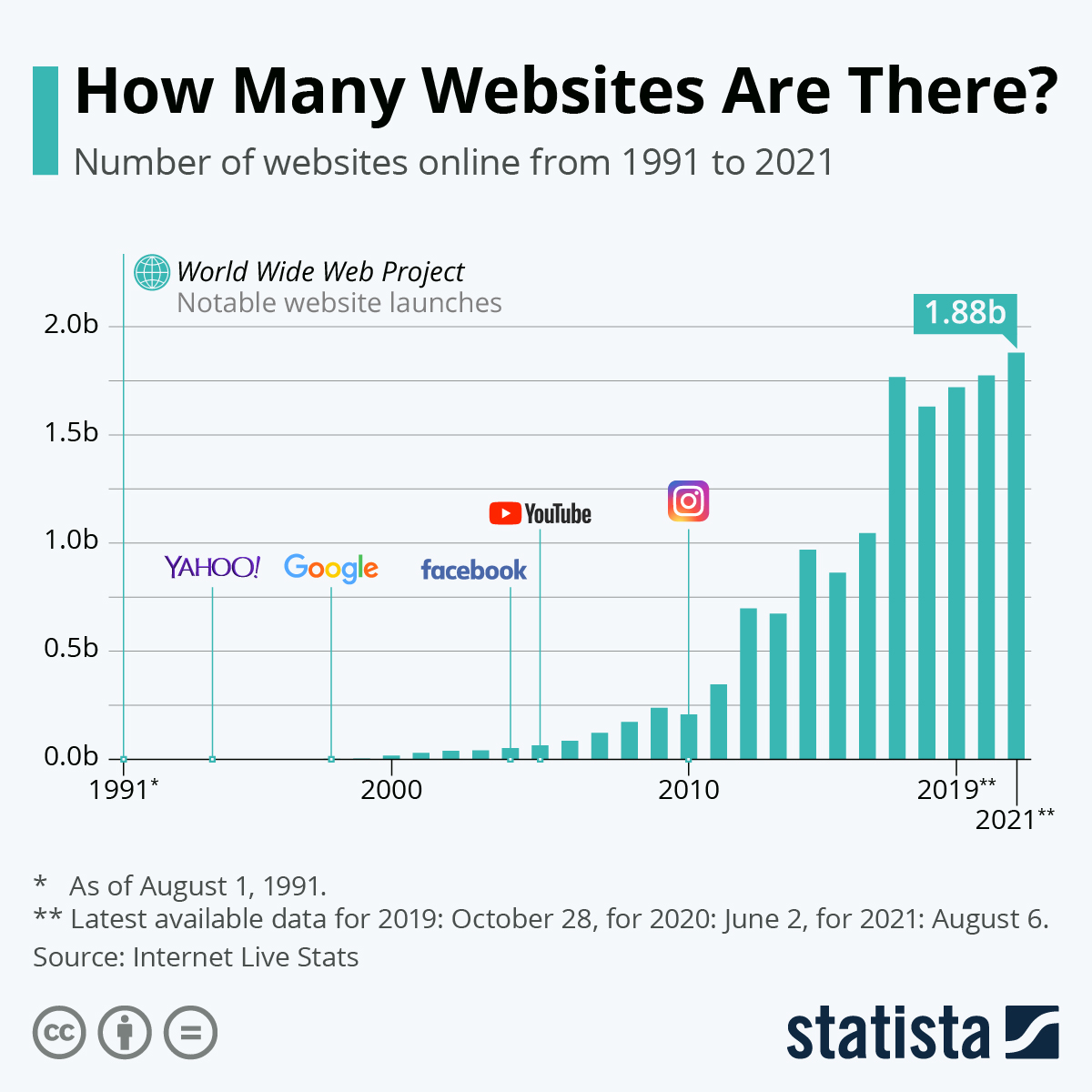
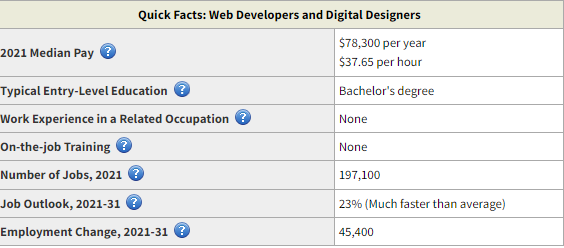








.png)
.png)














.png)




.png)
.png)
.png)
.png)
.png)
.png)
.png)


.png)



.png)


.png)
.png)

















 Next
Next
